CT PFAS FAQs
What is PFAS?
Throughout the northeast and across the nation, state and local officials, health departments, and water utilities–including Aquarion—have focused their attention on a group of human-made chemicals called per- and polyfluoroalkyl substances (PFAS).
PFAS are a family of chemicals widely used since the 1950s to manufacture common consumer products, and are also used in firefighting foams. These substances have been detected in drinking waters, including public and private water supplies, bottled water, consumer products, food, and cookware. They have been linked to a variety of health risks, particularly in women who are pregnant or nursing, and in infants.

In recognition of the growing concern about PFAS, Aquarion voluntarily began a PFAS testing program in 2019 for our more than 70 public water systems in Connecticut. These results, which were obtained by a laboratory certified by the state of Connecticut for PFAS analysis, showed that PFAS levels in our water supplies were less than the original advisory limit of 70 parts per trillion (ppt) defined by the Connecticut Department of Public Health (CT DPH) and United States Environmental Protection Agency (EPA).
On March 15, 2023 the US EPA proposed a National Primary Drinking Water Regulation (NPDWR) for 6 of the following PFAS Compounds: Perfluorooctanoic acid (PFOA), Perfluorooctane sulfonic acid (PFOS), Perfluorononoctanoic acid (PFNA), Perfluorohexane sulfonic acid (PFHxS), Perfluorobutane sulfonic acid (PFBS), and Hexafluoropropylene oxide dimer acid (HFPO-DA, aka GenX Chemicals). Aquarion is continuing our voluntary PFAS testing program in each of our water systems to ensure our customers receive the highest quality water achievable. This proposed rule does not require action until it is finalized in 2024, however, Aquarion will proactively be working to meet the proposed NPDWR.
Below are the proposed Maximum Contaminant Levels (MCLs):
- PFOA – 4 ppt
- PFOS – 4 ppt
- PFNA, PFHxS, PFBS, and HFPO-DA – 1.0 Hazard Index (unitless)
On June 15, 2022, the US EPA issued revised health advisories for four PFAS based on new information on the life-long exposure risk to these compounds. The health advisory levels identify levels of PFAS that will protect all people, including sensitive populations and life stages, from adverse health effects resulting from exposure throughout their lives to these PFAS. The health advisories are non-enforceable and non-regulatory advisories.
CT DPH also issued revised guidance on June 15, 2022 with the issuance of Action Levels for four of the following PFAS compounds: Perfluorooctane sulfonic acid (PFOS), Perfluorononoctanoic acid (PFNA), Perfluorooctanoic acid (PFOA), Perfluorohexane sulfonic acid (PFHxS). The levels are non-enforceable and testing by a utility continues to be voluntary.
- PFOS – 10 ppt
- PFNA – 12 ppt
- PFOA – 16 ppt
PFHxS – 49 ppt
What has Aquarion been doing in Connecticut?
- Aquarion started voluntary testing of its Connecticut water sources in 2019 and continues to conduct voluntary testing. All samples are analyzed by a laboratory that is certified by the state of Connecticut for PFAS analysis.
- Aquarion's latest sampling results are available through the Water Quality Management Department. To learn more, contact Water Quality at 1‑800‑832‑2373.
- Aquarion also shares PFAS results in its annual Consumer Confidence Reports (CCRs). Aquarion’s latest Connecticut CCRs are now available at aquarionwater.com/wqr.
- Aquarion has been proactively planning for possible infrastructure upgrades to reduce levels of PFAS in the water sources in which PFAS have been detected above the CT Action Levels described above. These upgrades can be quite costly. To help offset costs to customers, Aquarion has been actively seeking funding through the Infrastructure Investment and Jobs Act, which will help mitigate the impact of these projects on water rates.
- Aquarion also inspected land use activities around each of our water supplies (wells and reservoirs) and found no high-risk contamination sources such as industrial, commercial, and municipal activities that might release high levels of PFAS to the environment.
Aquarion will remain vigilant about this important issue, including additional testing for PFAS at some of our water sources. We will continue to share test results with our customers and state and local officials. We will also continue to work with the public health agencies and drinking water associations to ensure the protection of our drinking water supplies, and delivery of high-quality water to our customers.
Below are Aquarion's PFAS sampling results by town/water system and additional information links on PFAS. Values listed as “ND” (not detected) include results detected at a level below the EPA minimum reporting level of 2 ppt. This is the smallest amount of PFAS that the lab can confidently and reliably measure.
Bethel Systems PFAS Sampling Results
The Chimney Heights System has been merged with the Newtown System. Please see the Newtown Regional table for Chimney Heights PFAS results.

Bridgeport Metro System PFAS Sampling Results
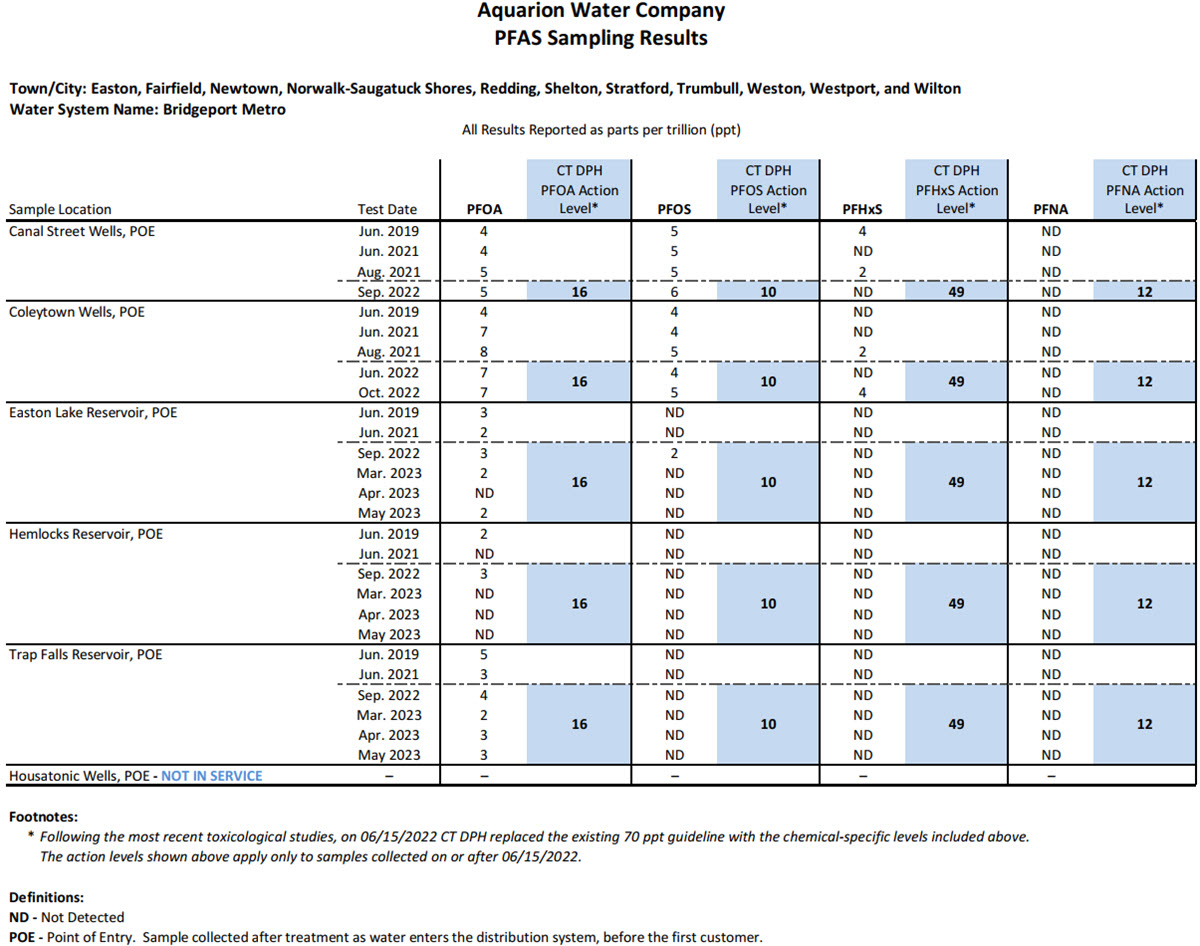
Brookfield Systems PFAS Sampling Results
For more information about the Brookfield area of the New Milford Regional System, please see our New Milford Regional System PFAS Sampling Results.
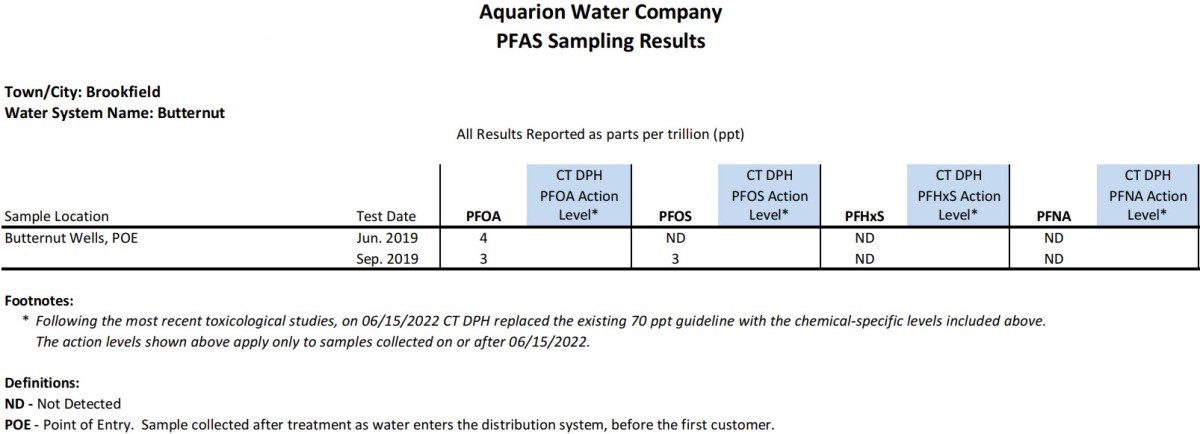
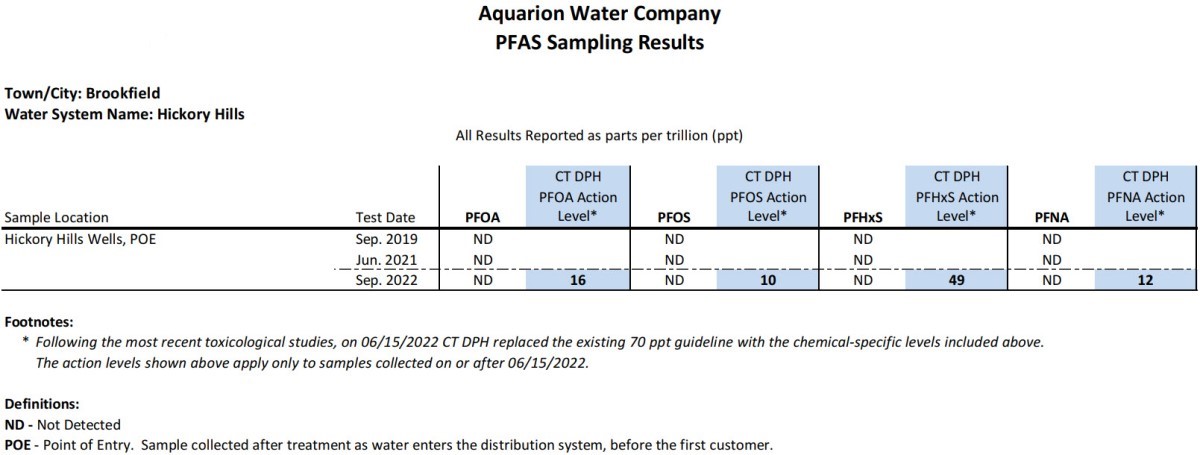
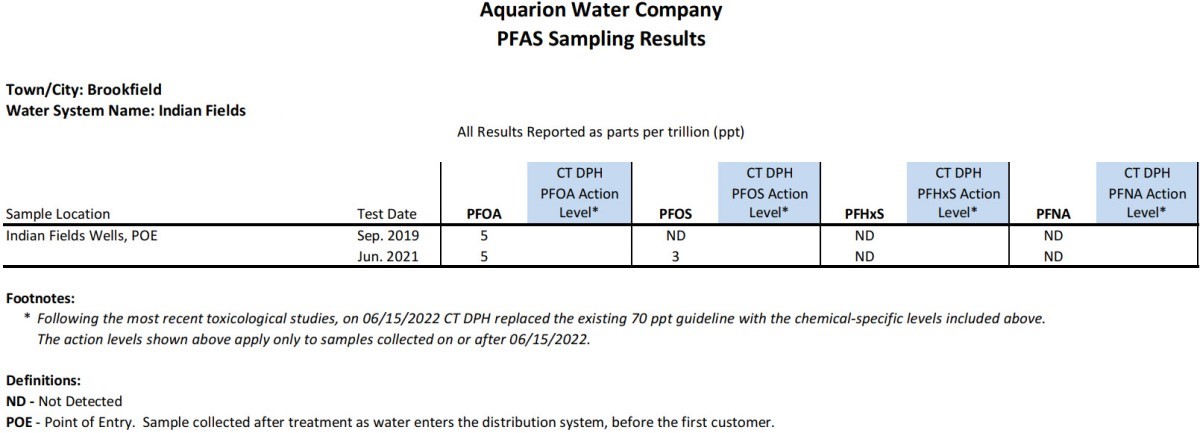
Cornwall System PFAS Sampling Results
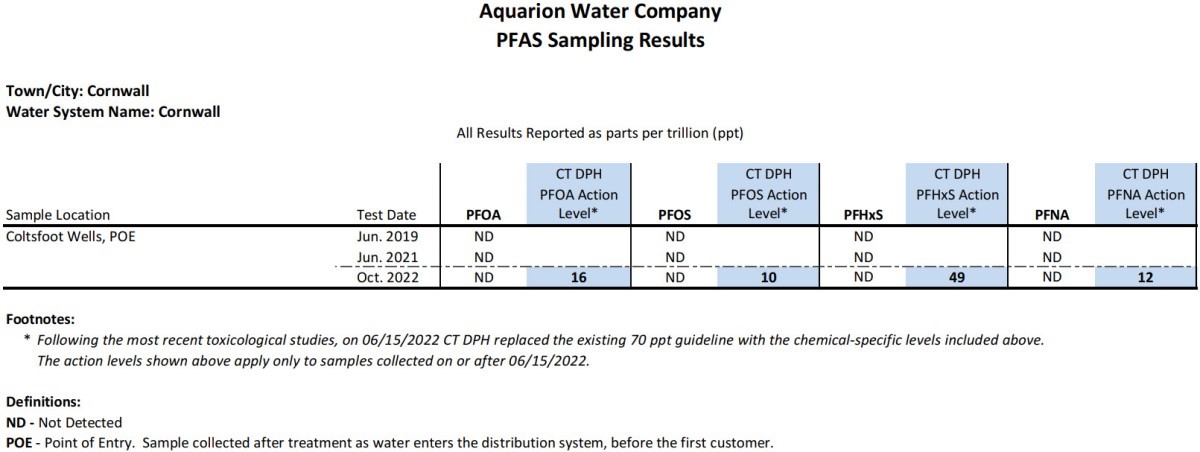
Danbury Systems PFAS Sampling Results
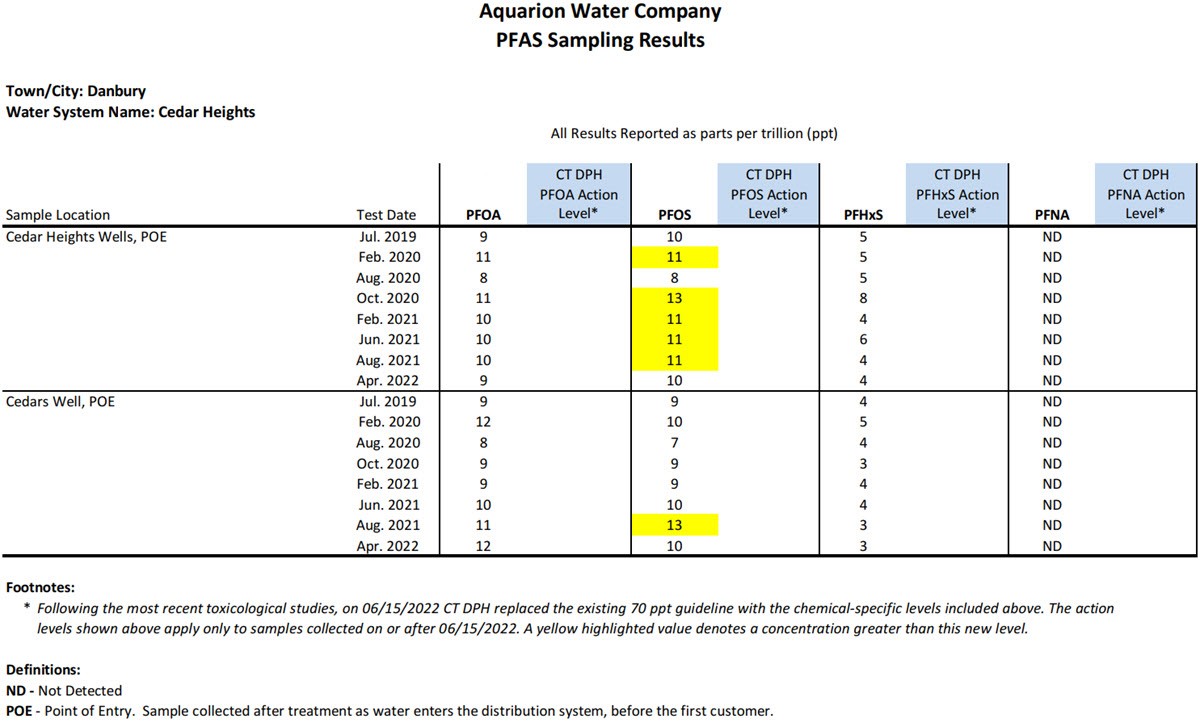
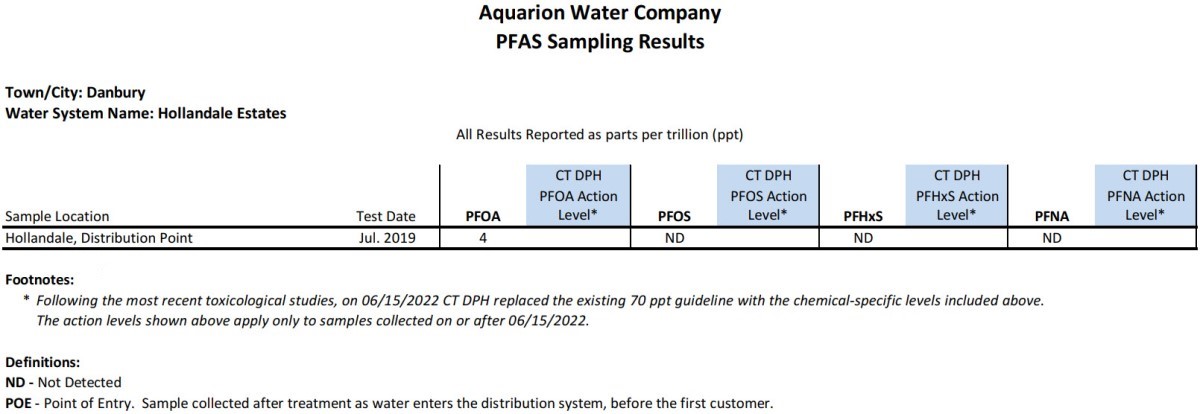
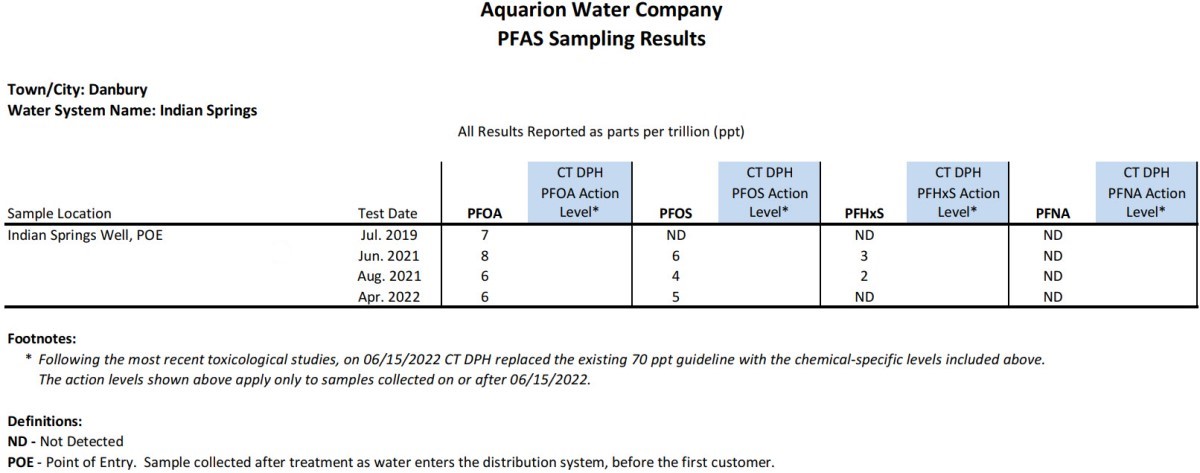
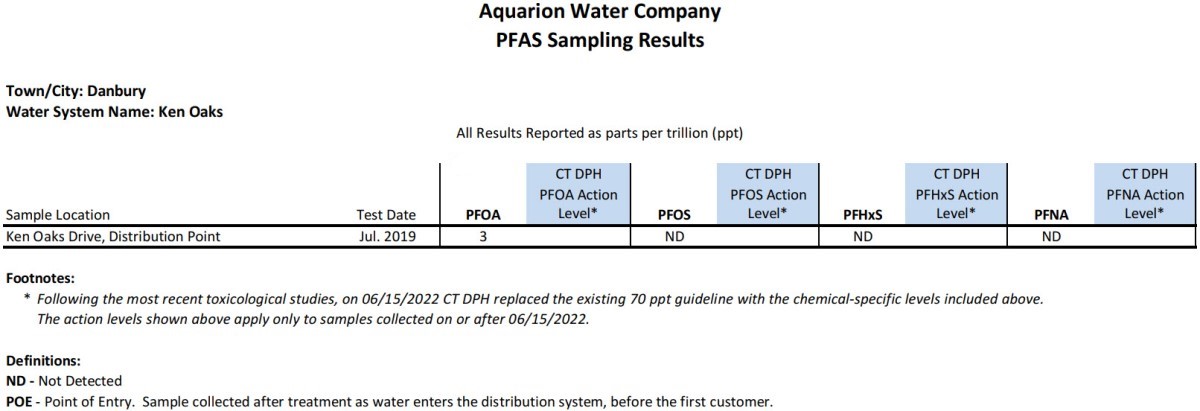
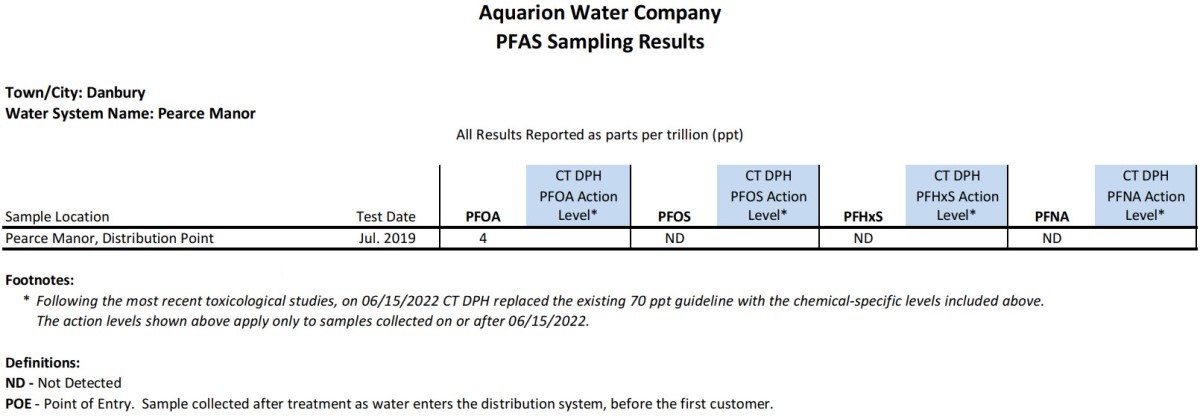
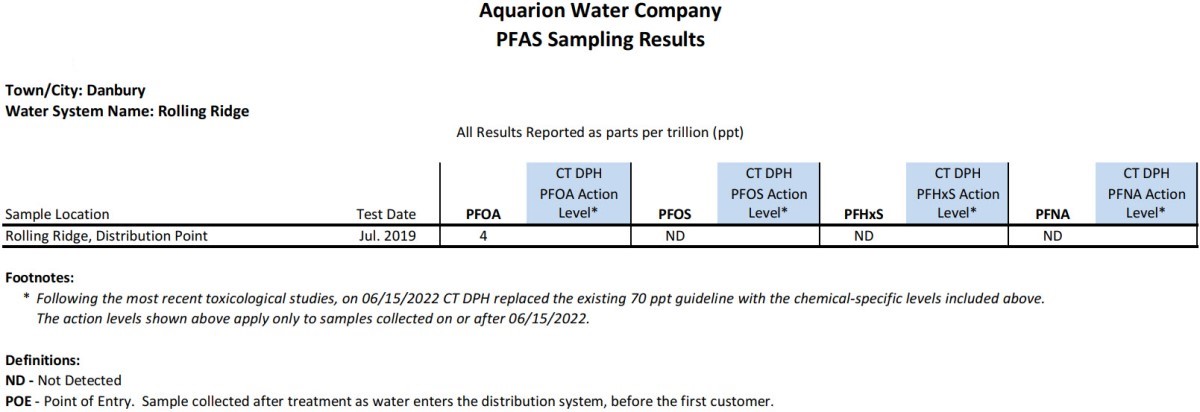
Darien System PFAS Sampling Results
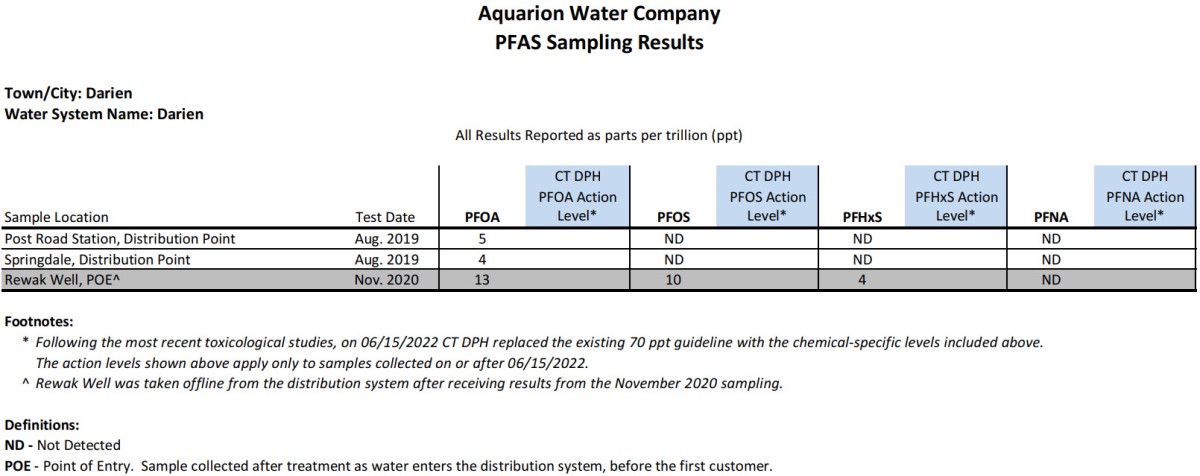
East Derby System PFAS Sampling Results
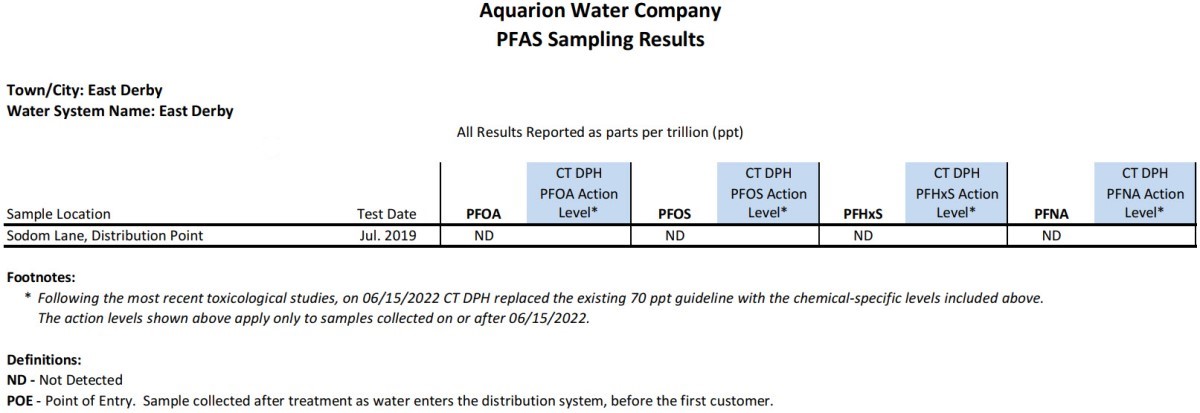
East Hampton System PFAS Sampling Results
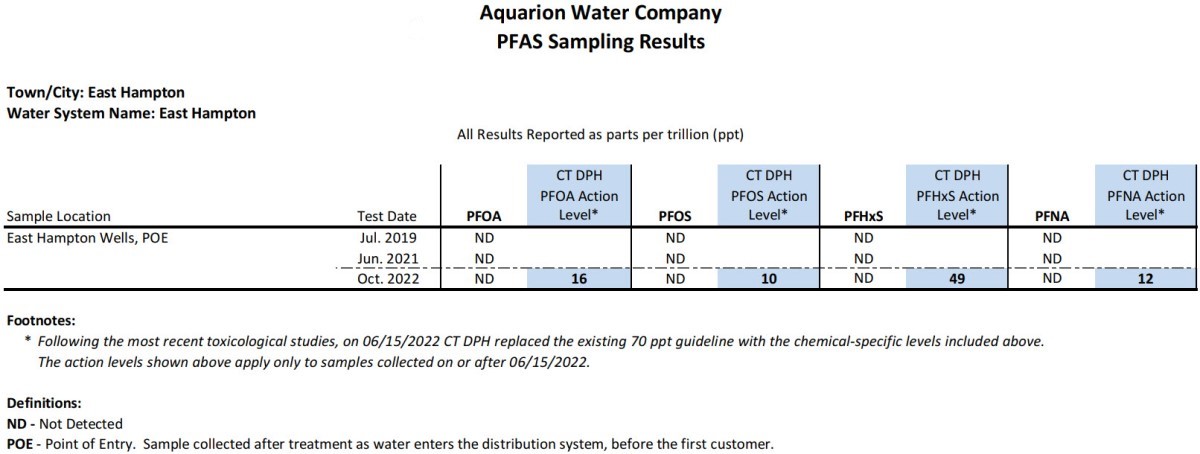
Goshen System PFAS Sampling Results
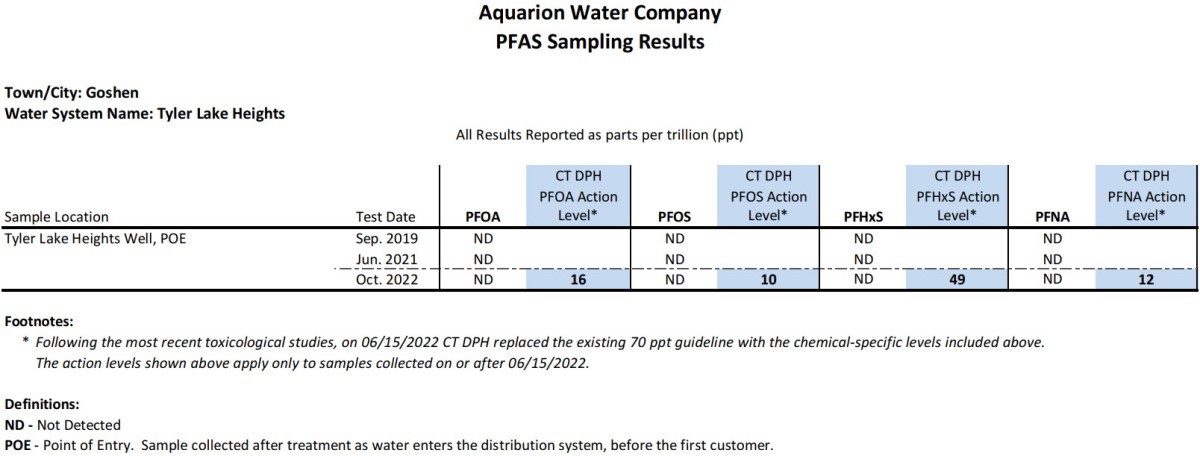
Greenwich System PFAS Sampling Results
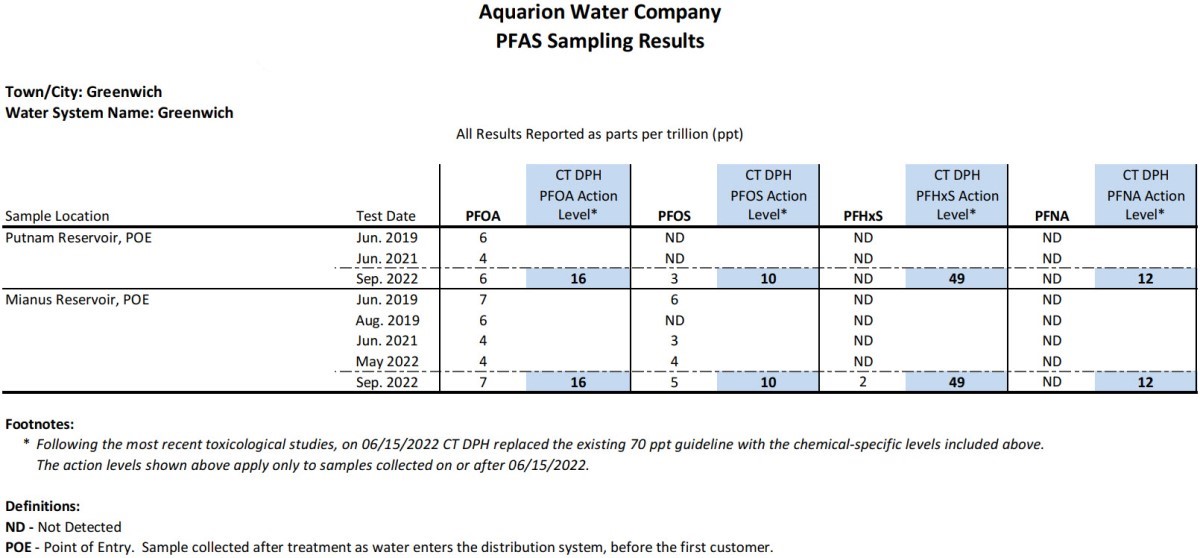
Kent System PFAS Sampling Results
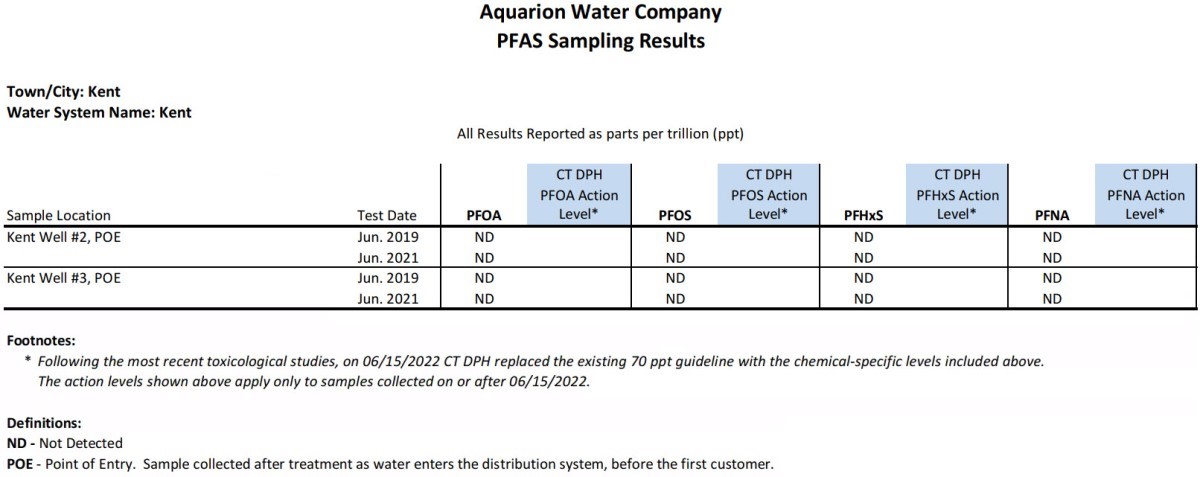
Lakeville / Salisbury System PFAS Sampling Results
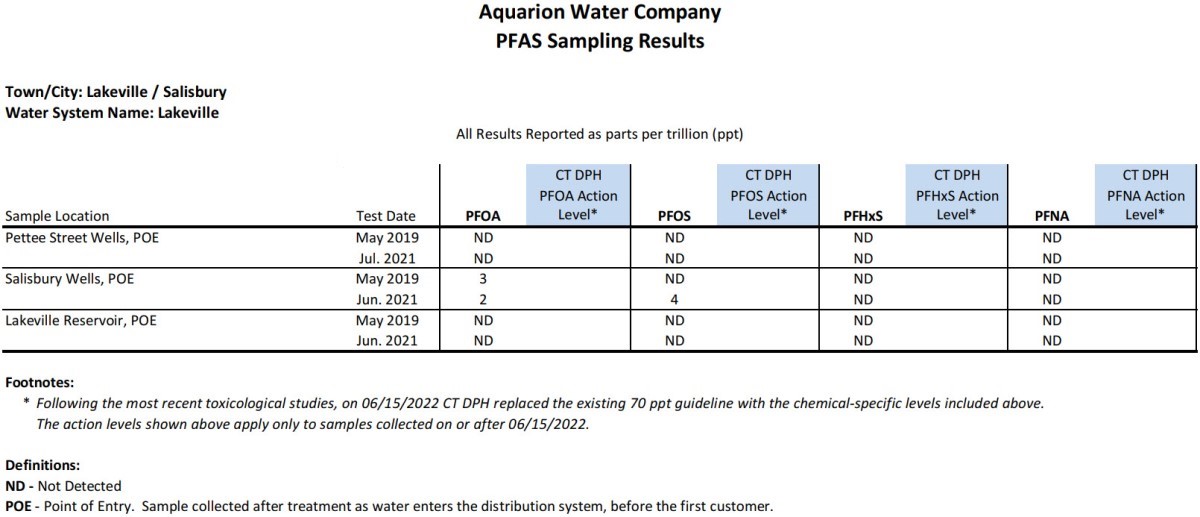
Lebanon System PFAS Sampling Results
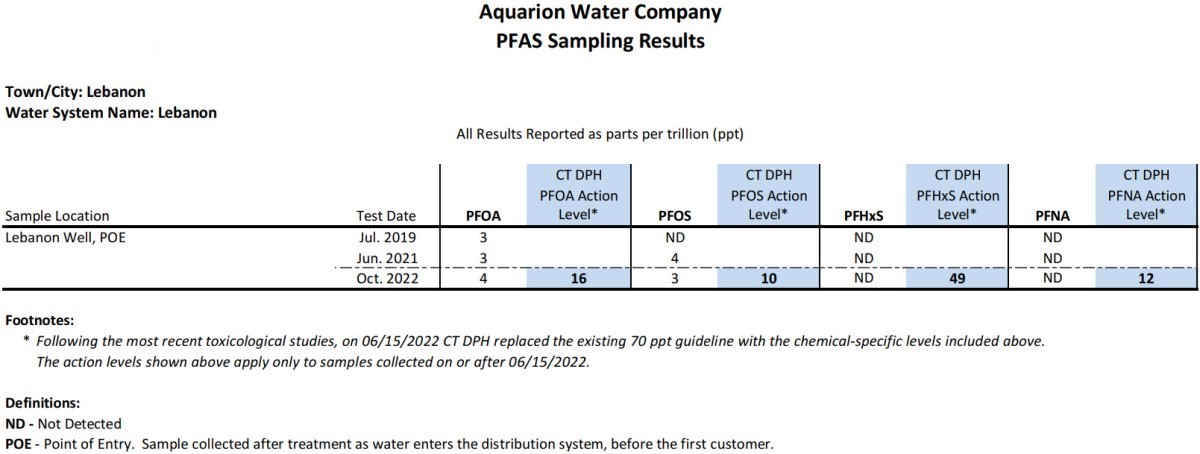
Litchfield / Goshen System PFAS Sampling Results
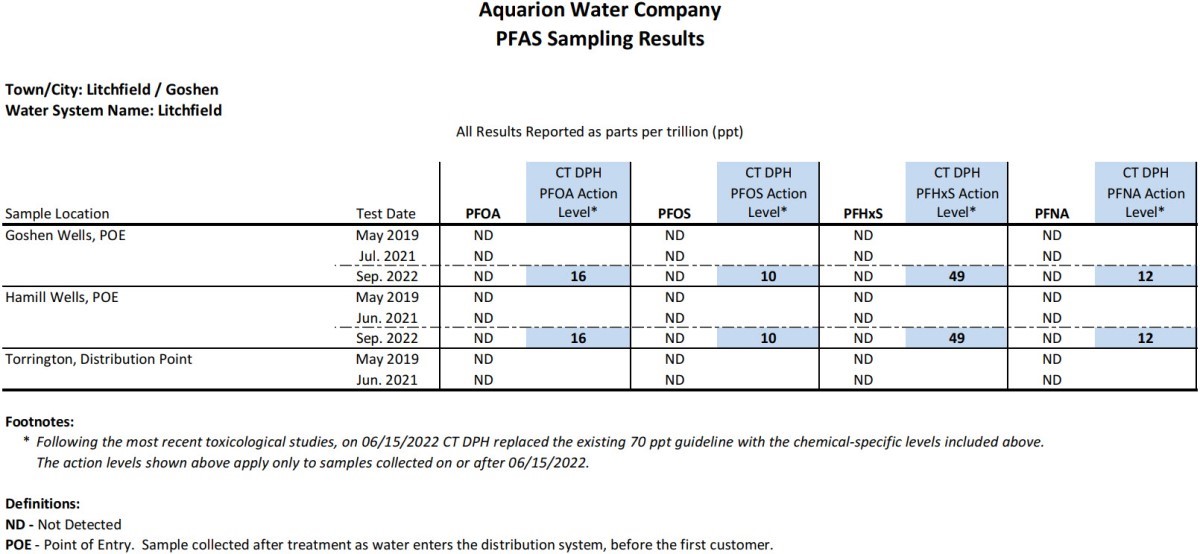
Mansfield System PFAS Sampling Results
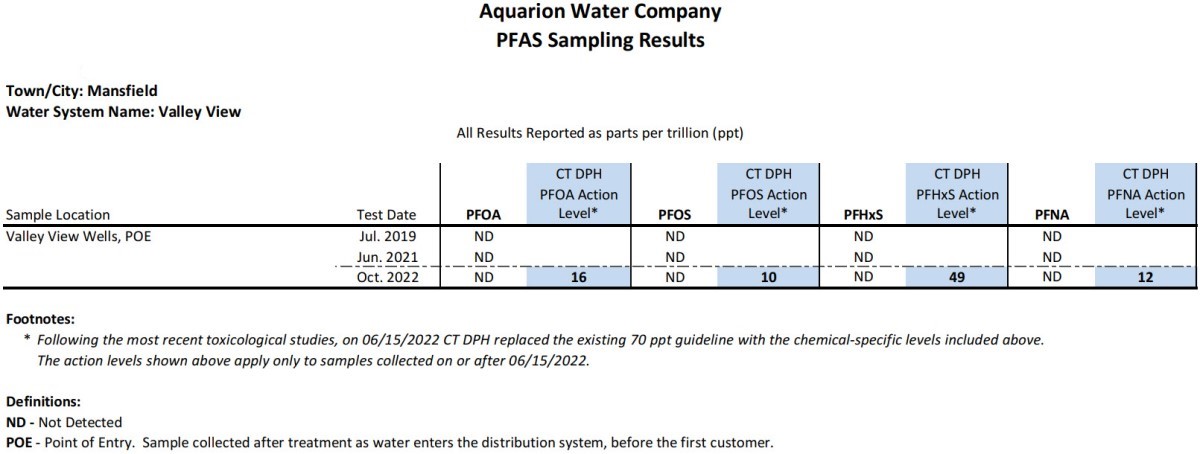
Marlborough System PFAS Sampling Results
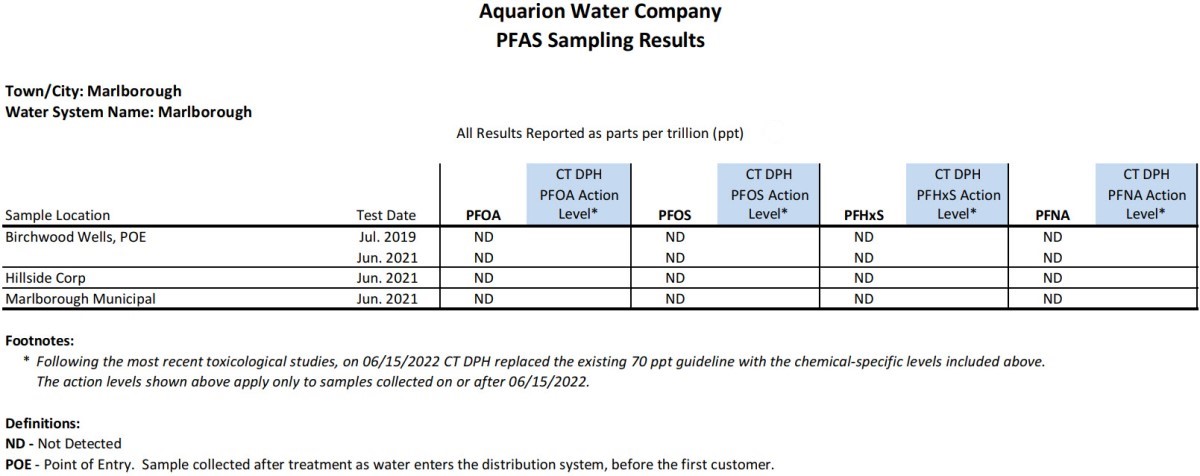
Middlebury System PFAS Sampling Results
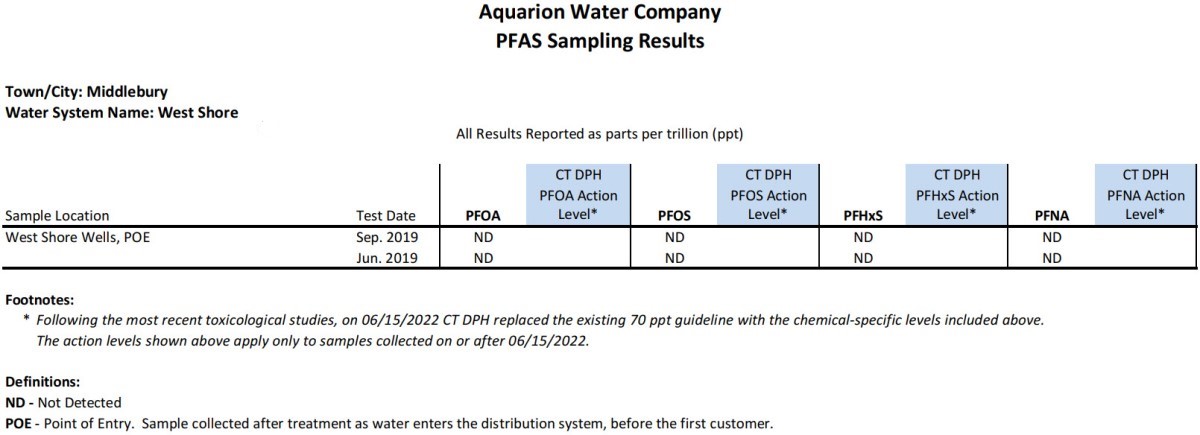
Mystic System PFAS Sampling Results
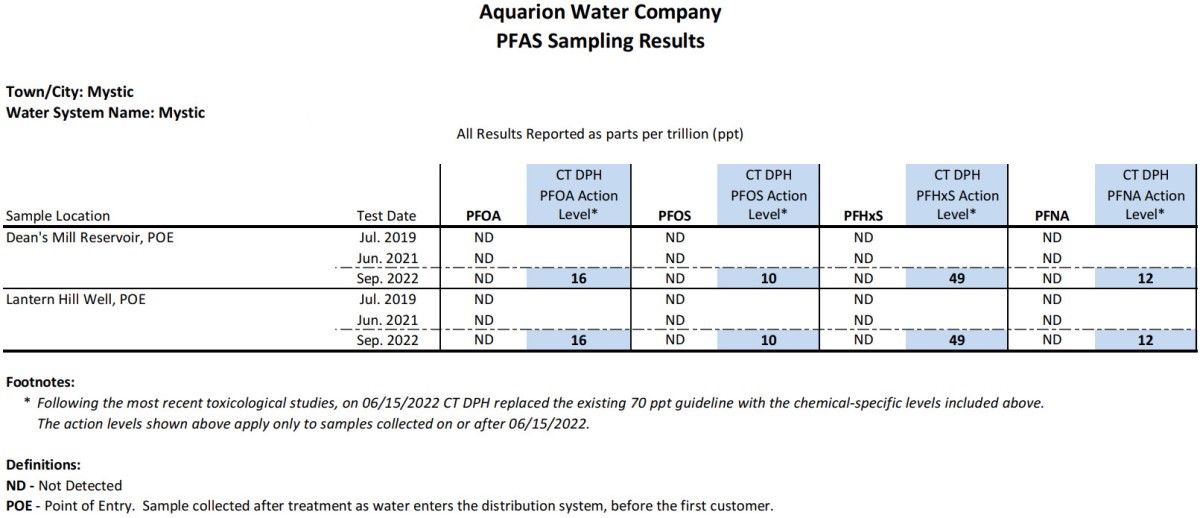
New Canaan System PFAS Sampling Results
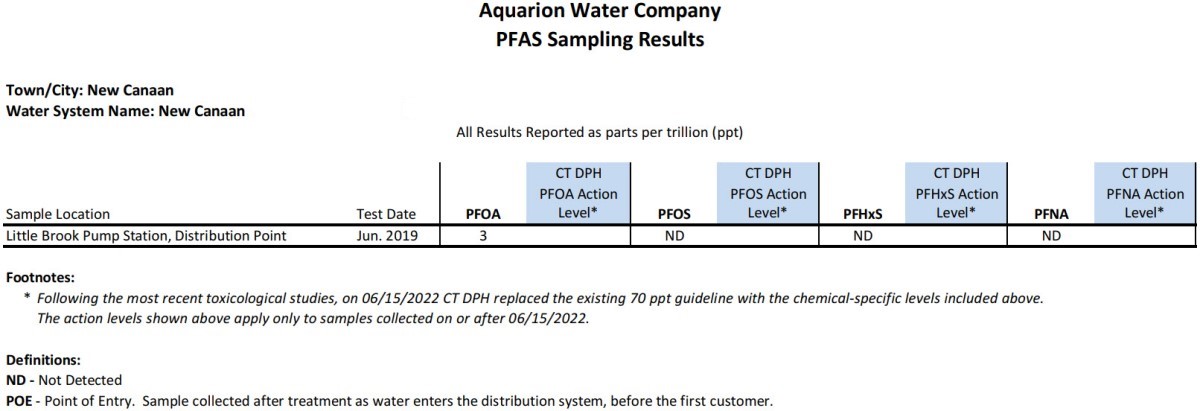
New Fairfield Systems PFAS Sampling Results
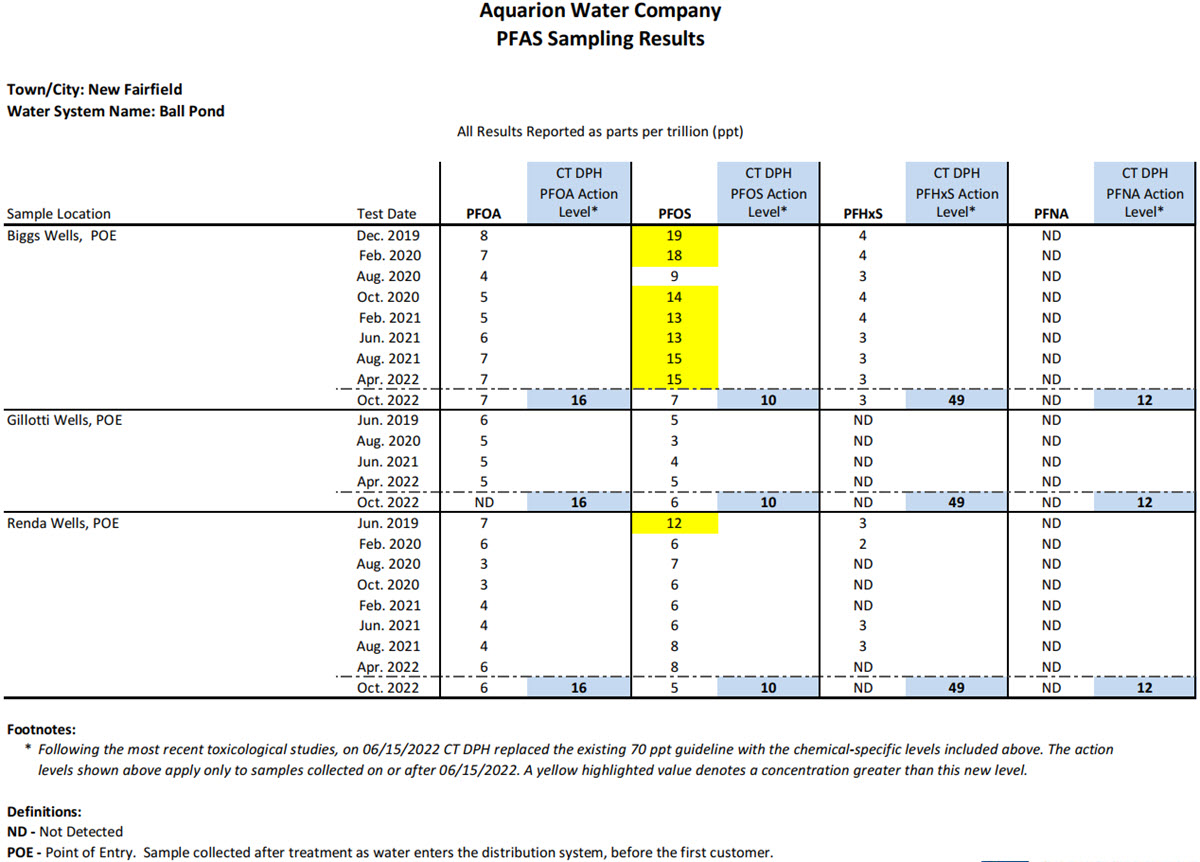
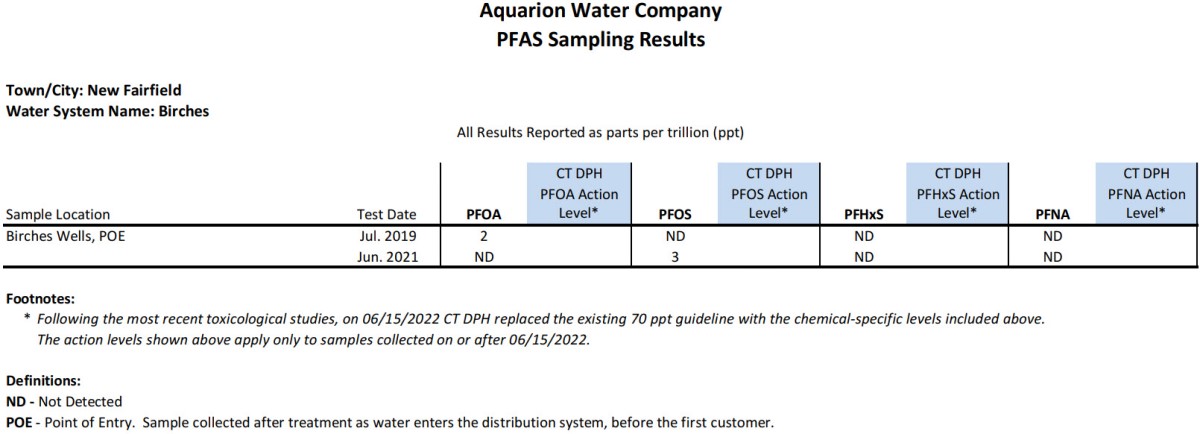
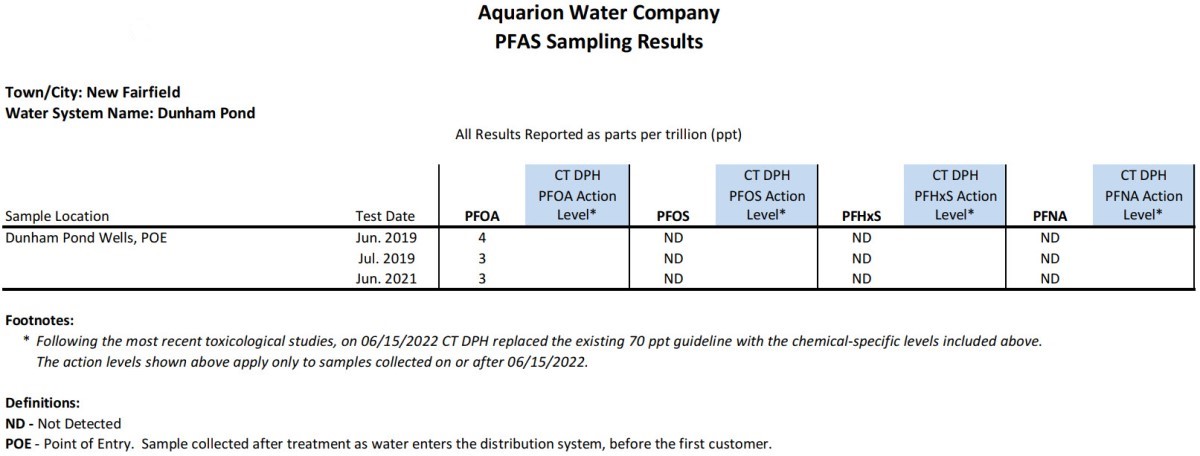
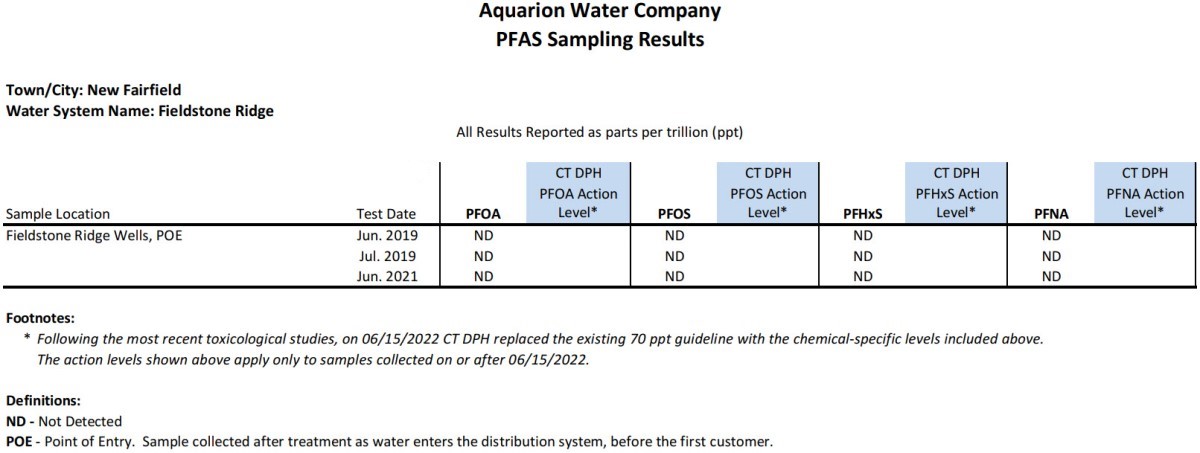
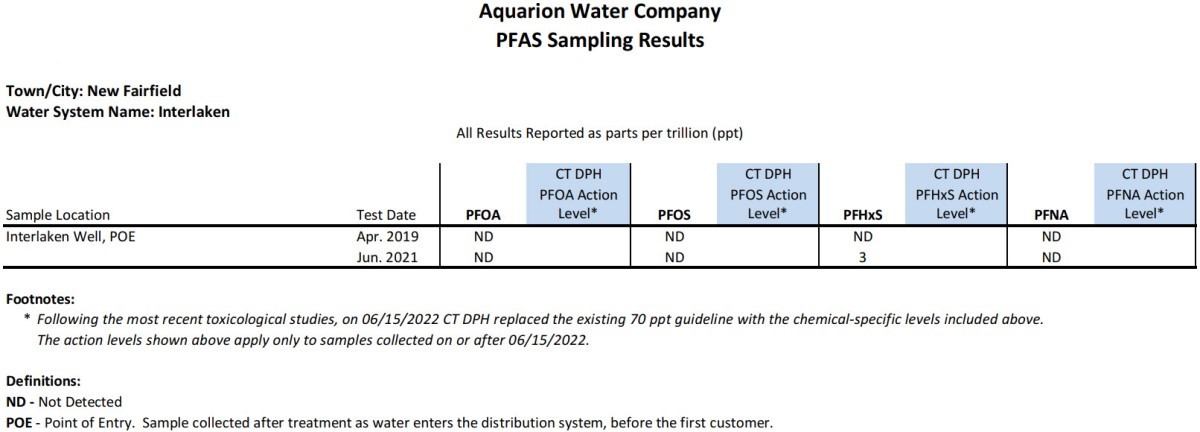
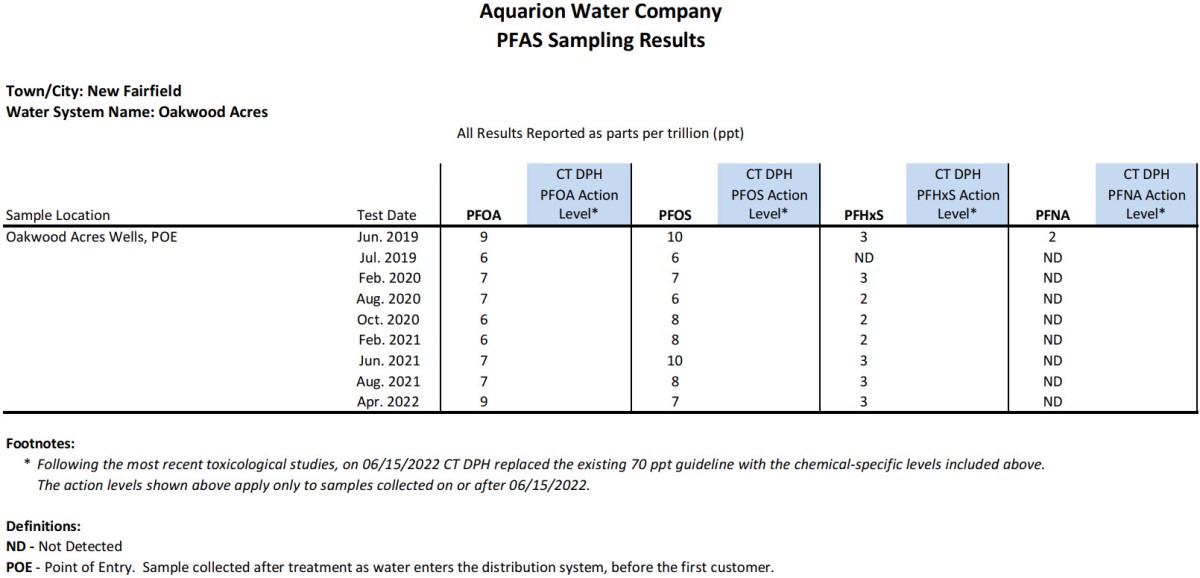
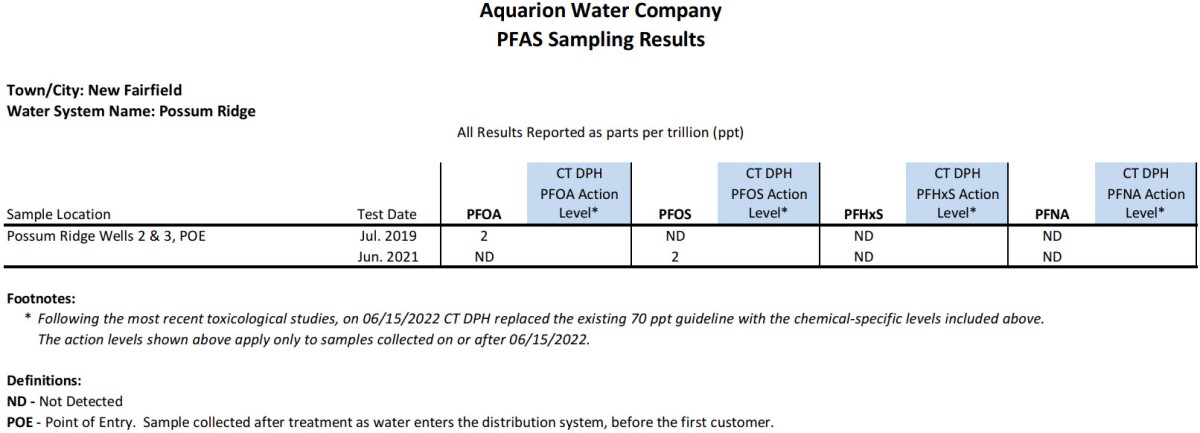
New Milford Systems PFAS Sampling Results
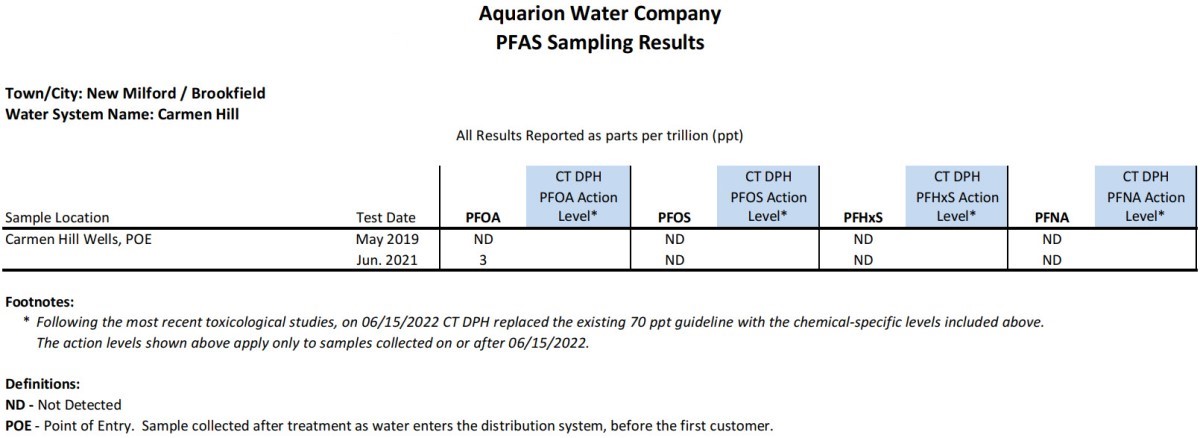
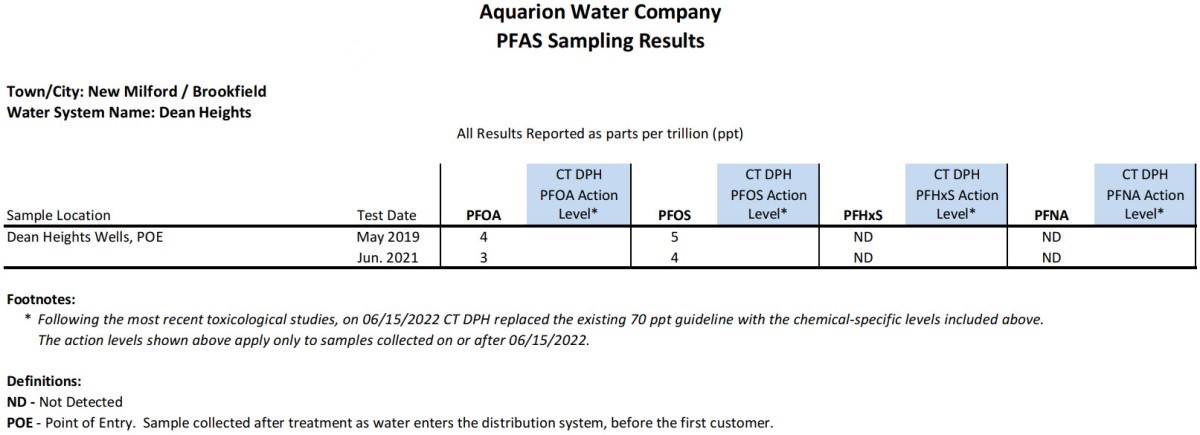
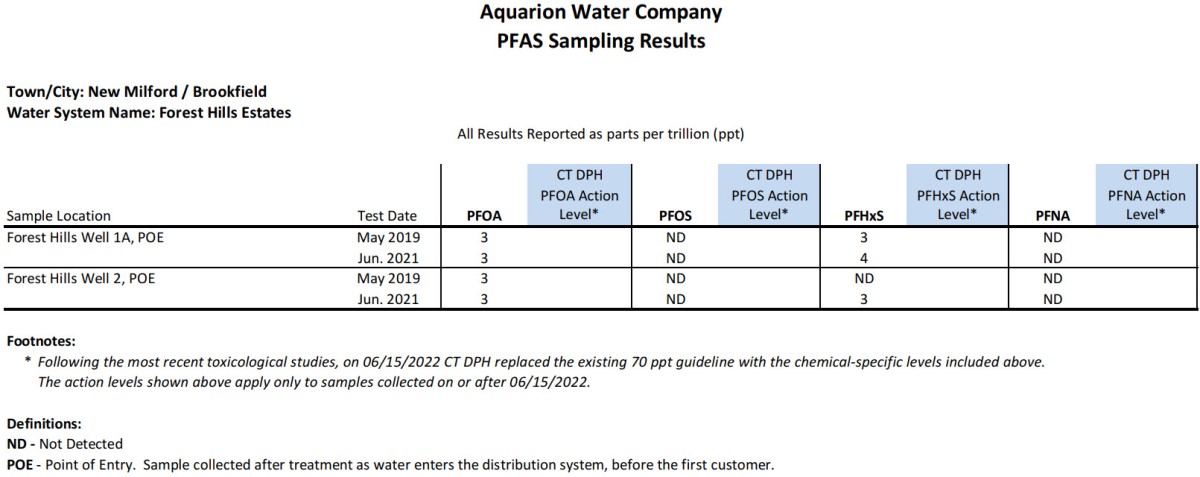
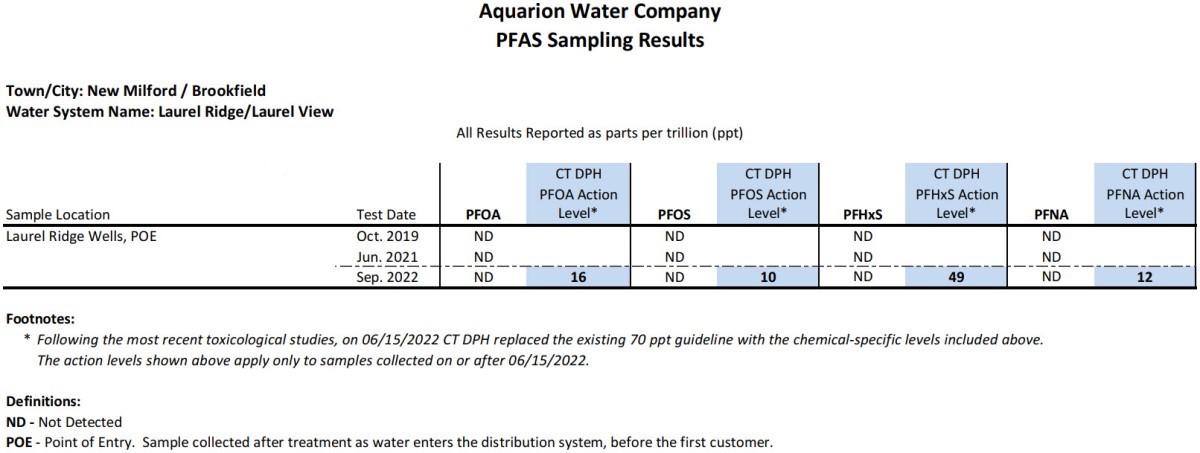
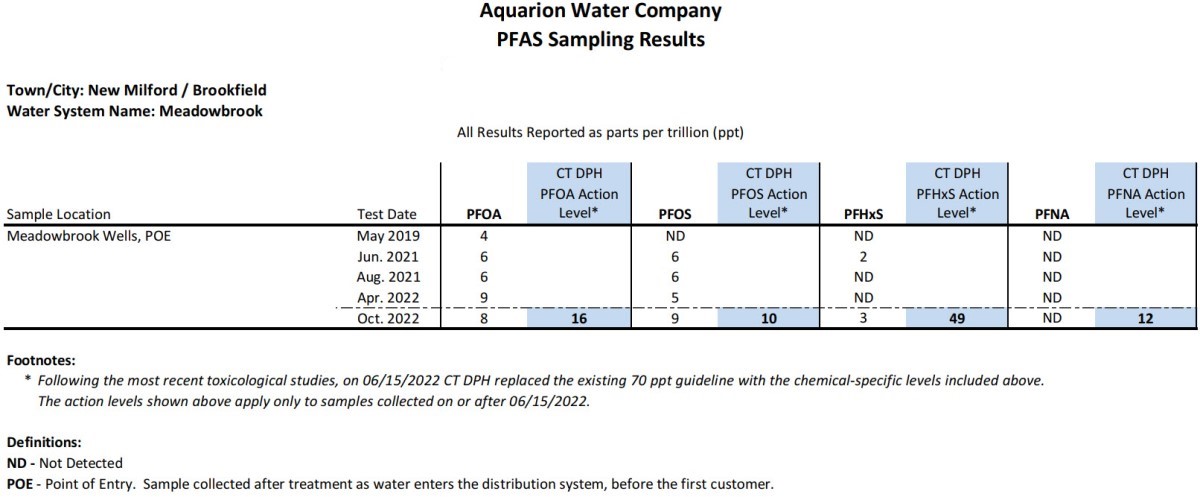
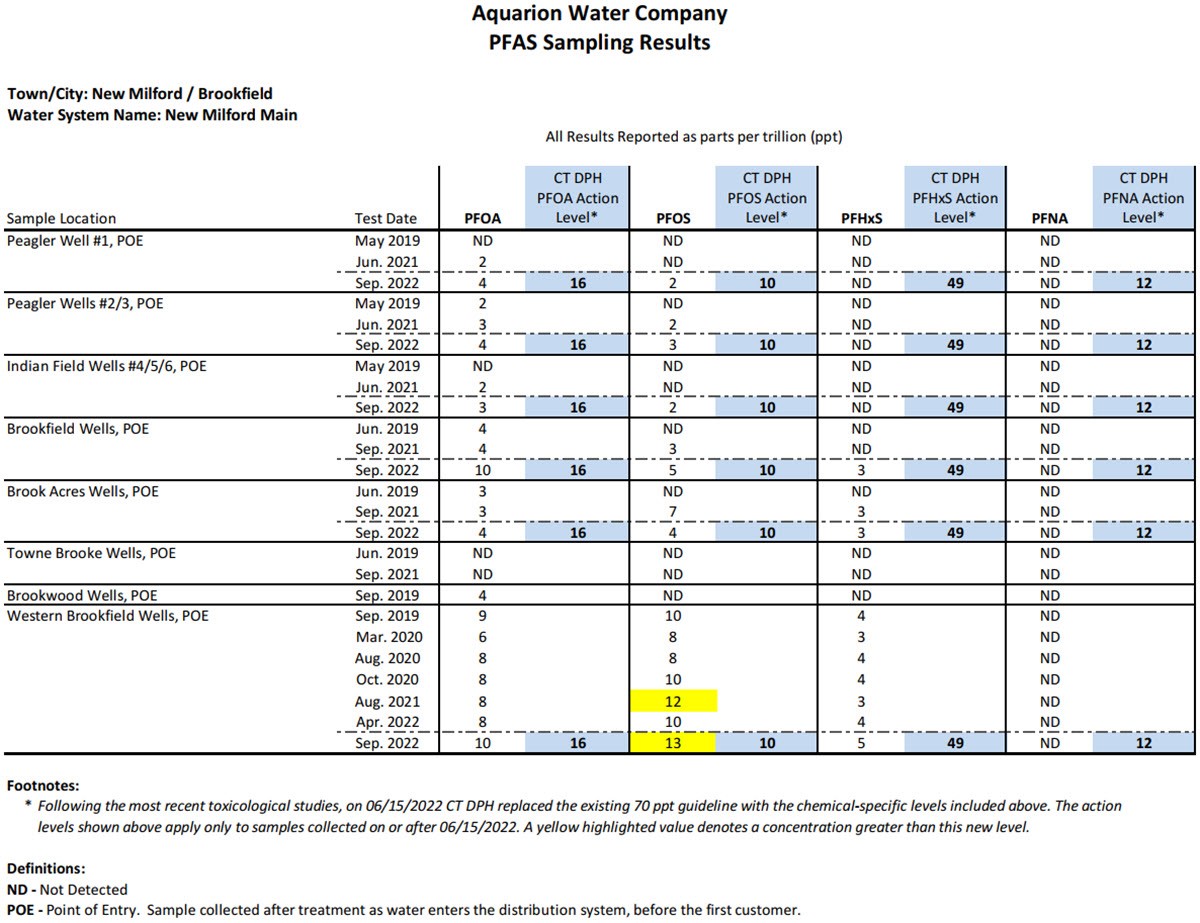
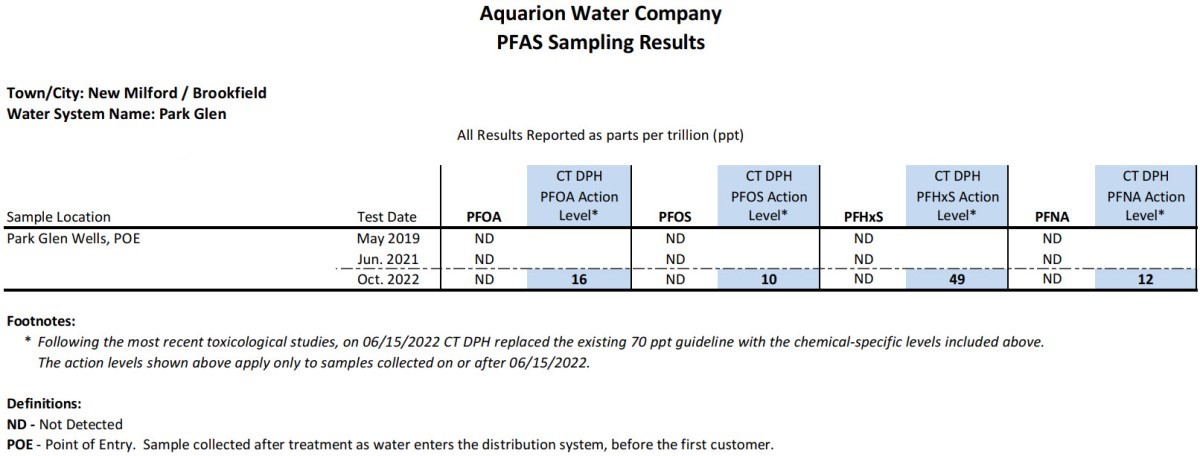
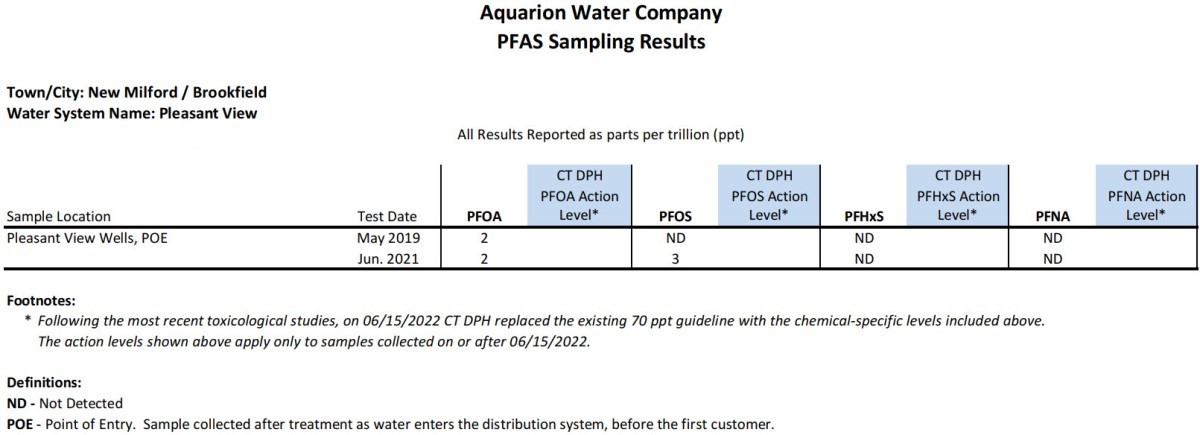
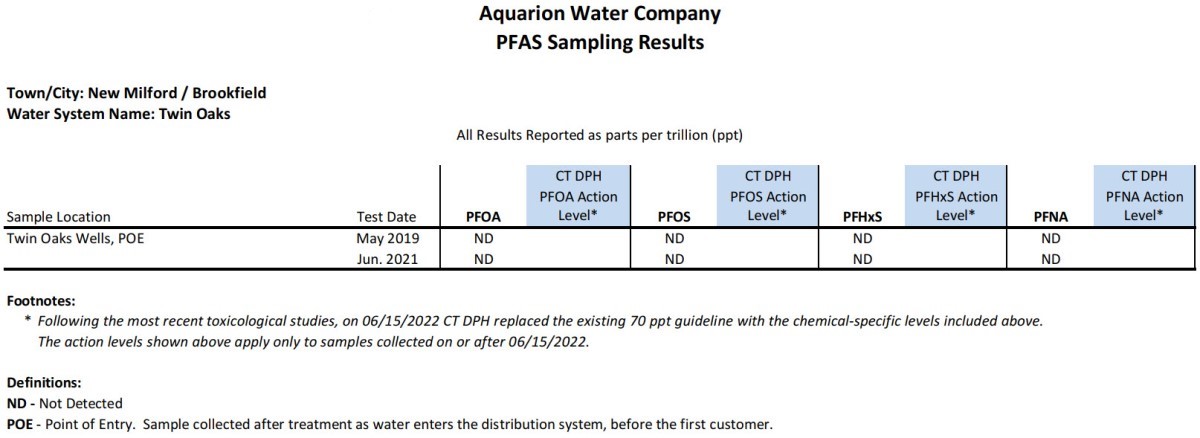
Newtown System PFAS Sampling Results
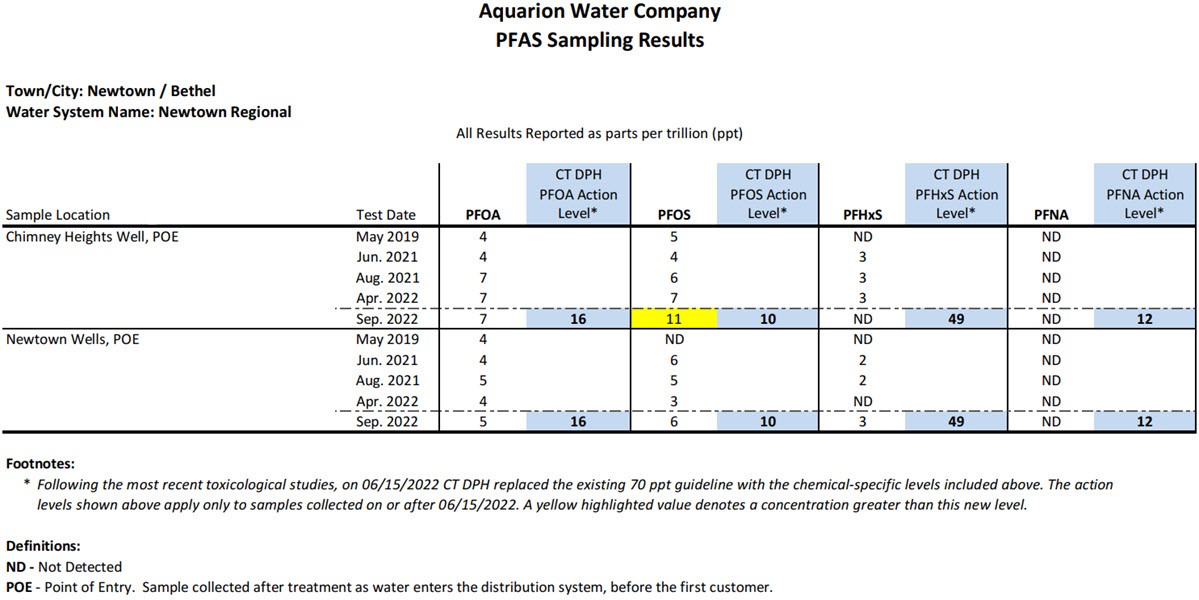
Norfolk System PFAS Sampling Results
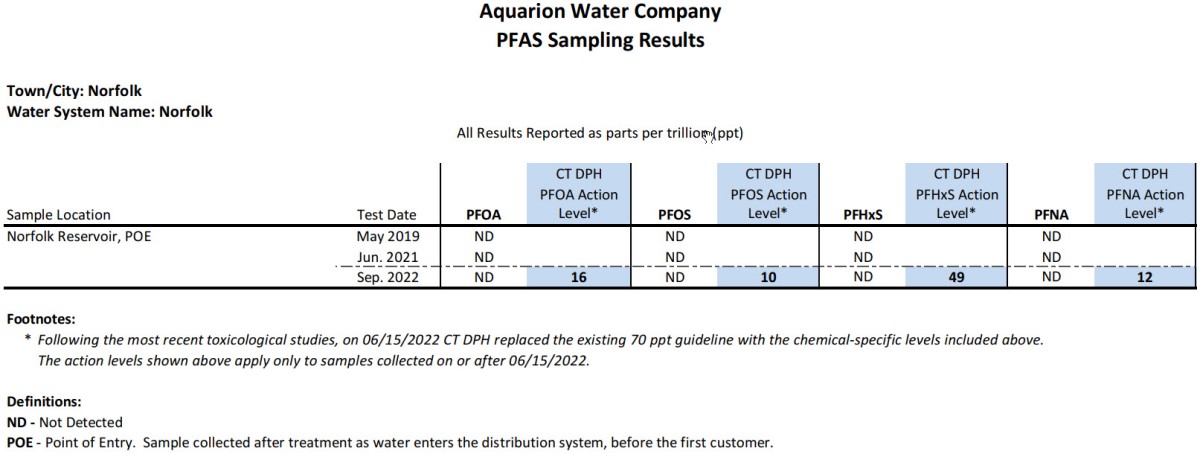
North Canaan System PFAS Sampling Results
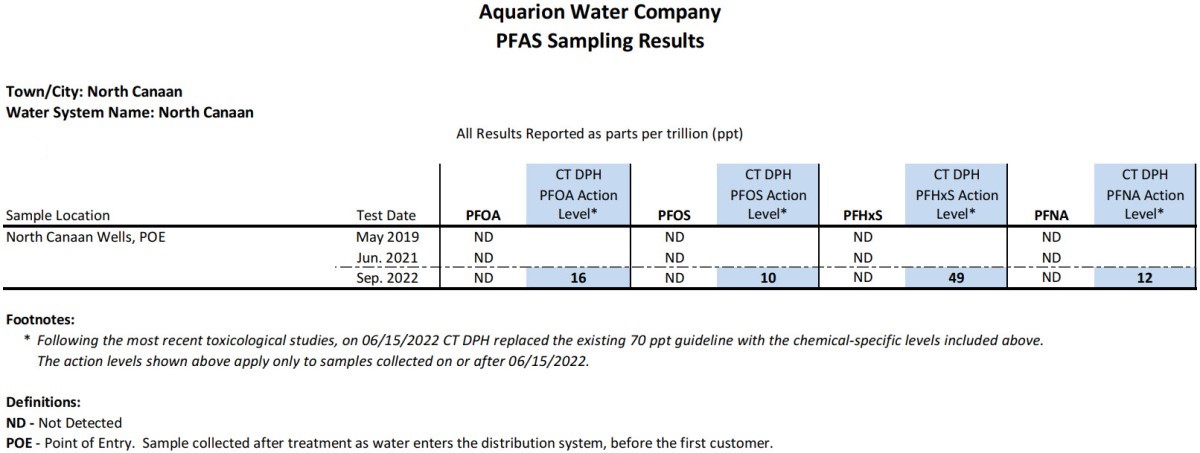
Norwich System PFAS Sampling Results
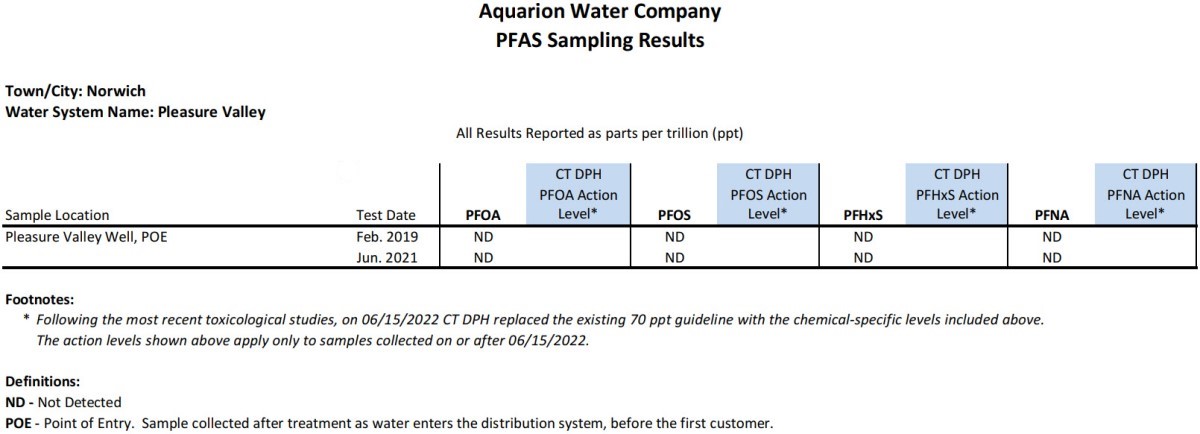
Oxford Systems PFAS Sampling Results
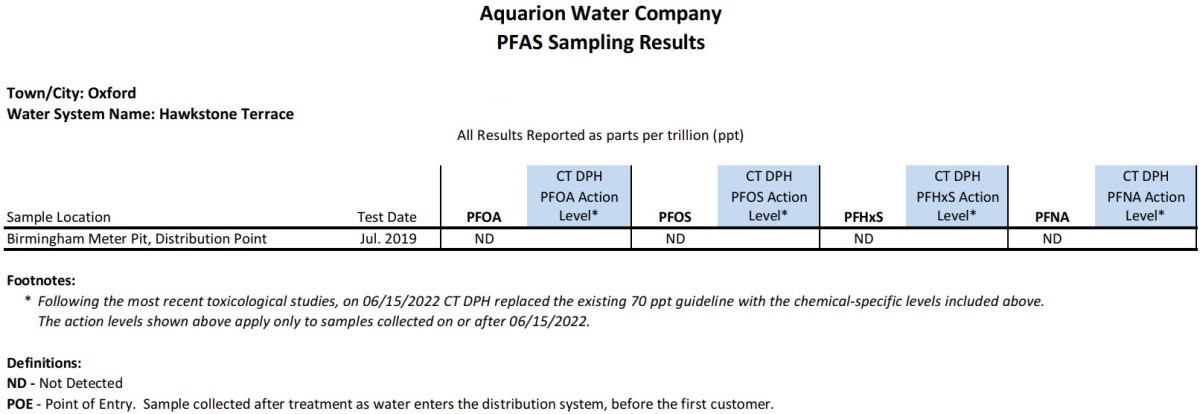
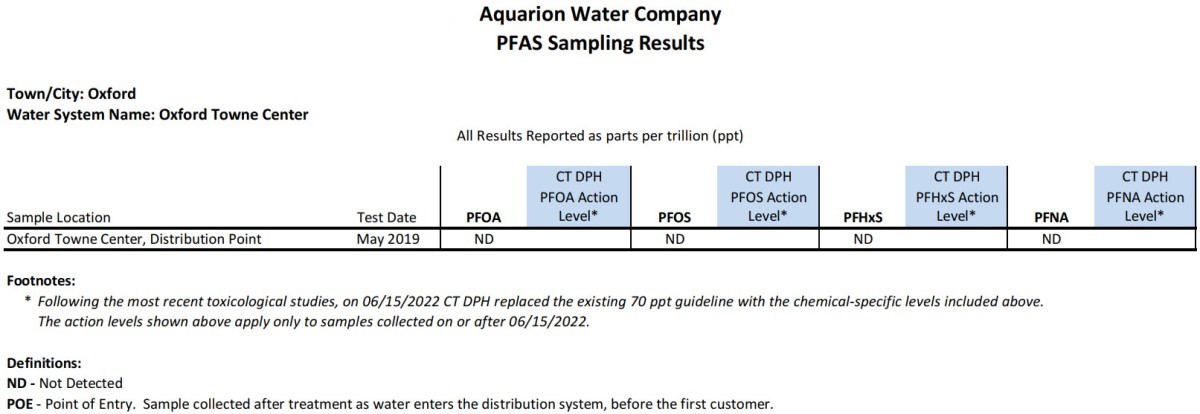
Plainville / Bristol / Farmington / Southington PFAS Sampling Results
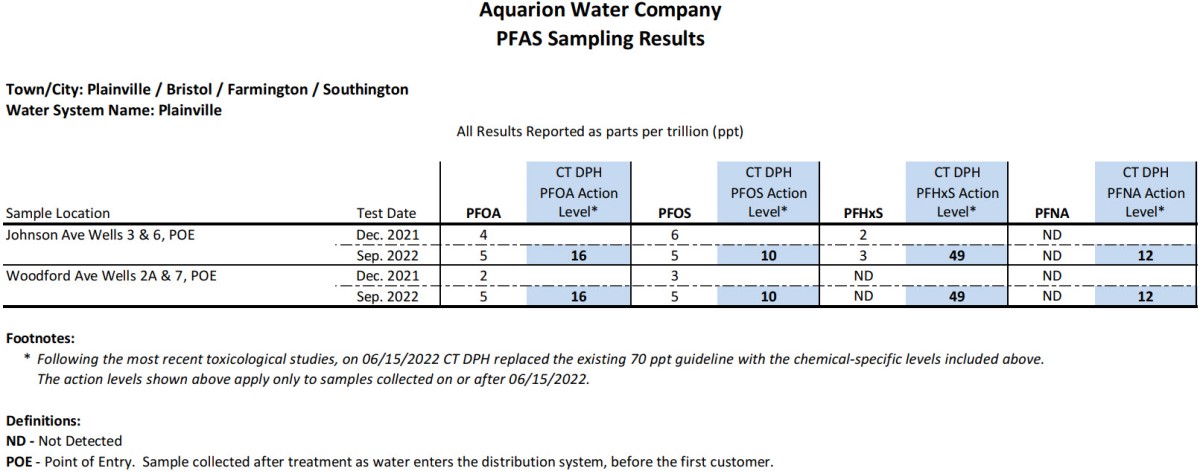
Ridgefield Systems PFAS Sampling Results
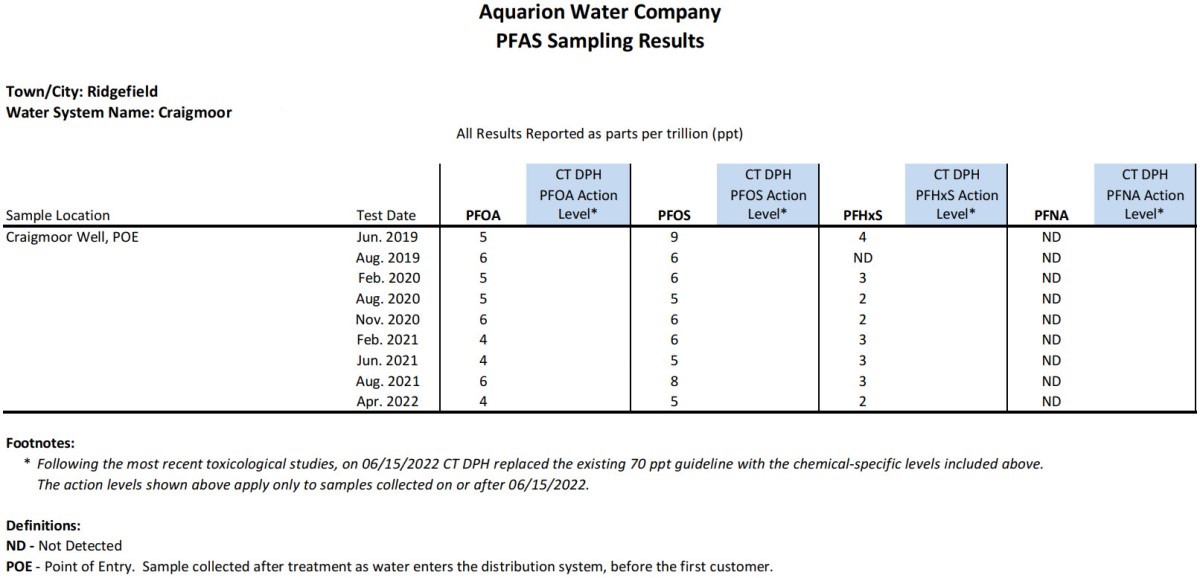
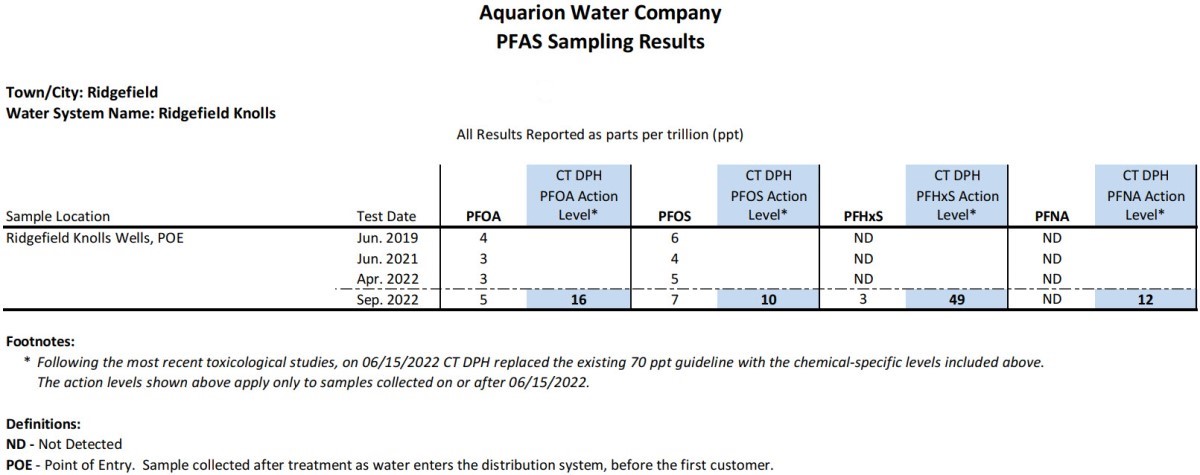
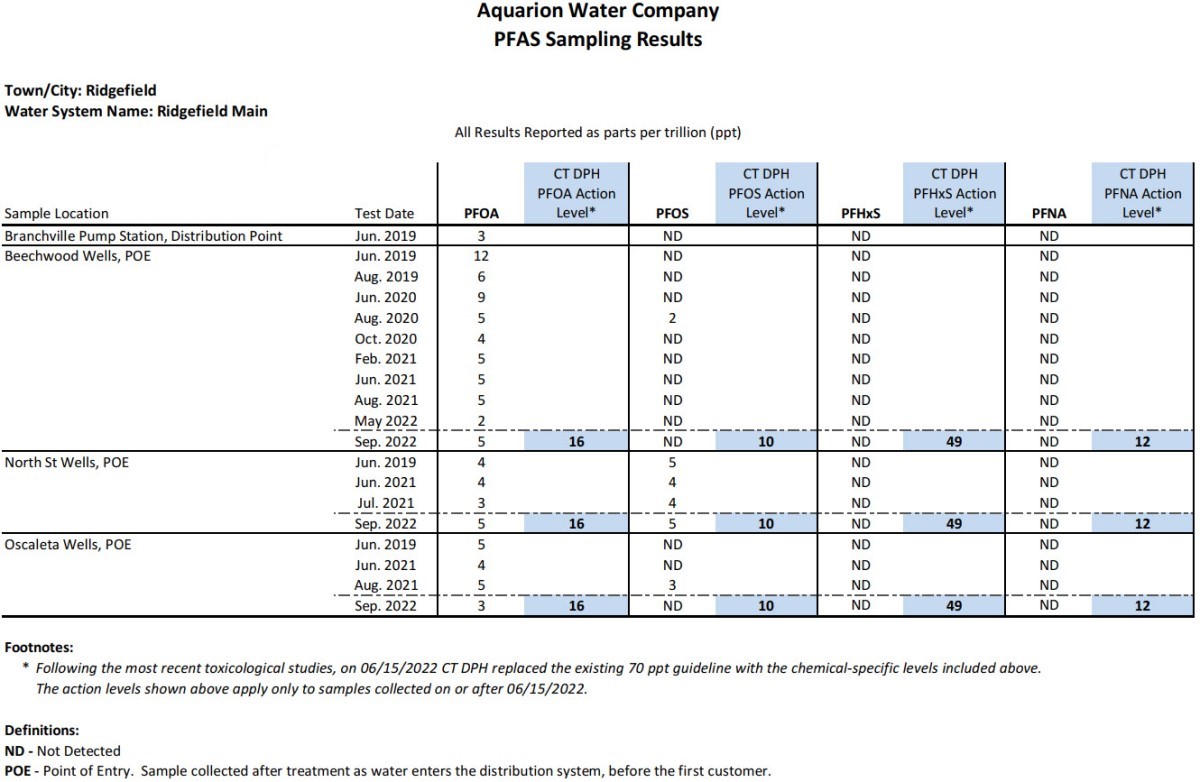
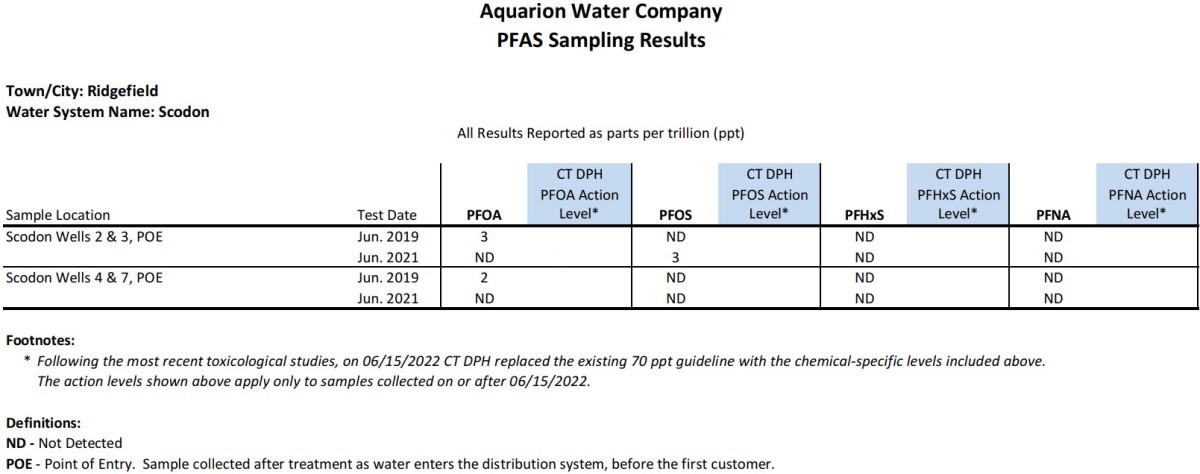
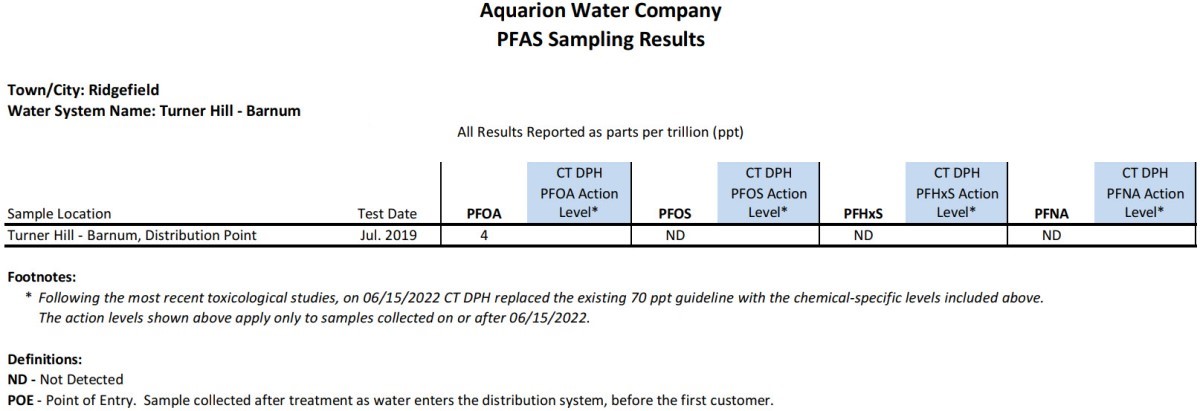
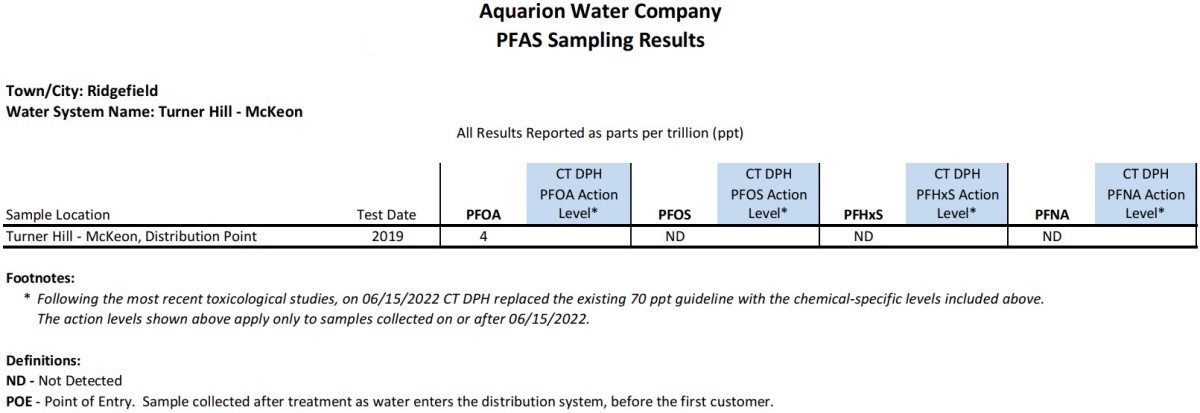
Seymour / Oxford / Beacon Falls System PFAS Sampling Results
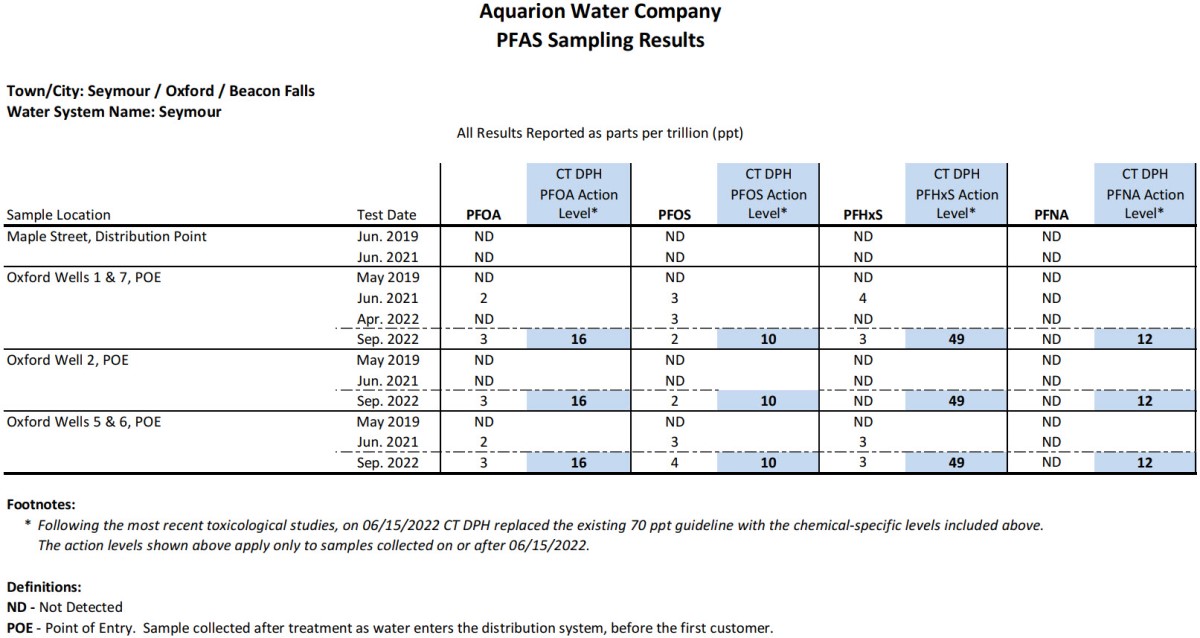
Sherman System PFAS Sampling Results
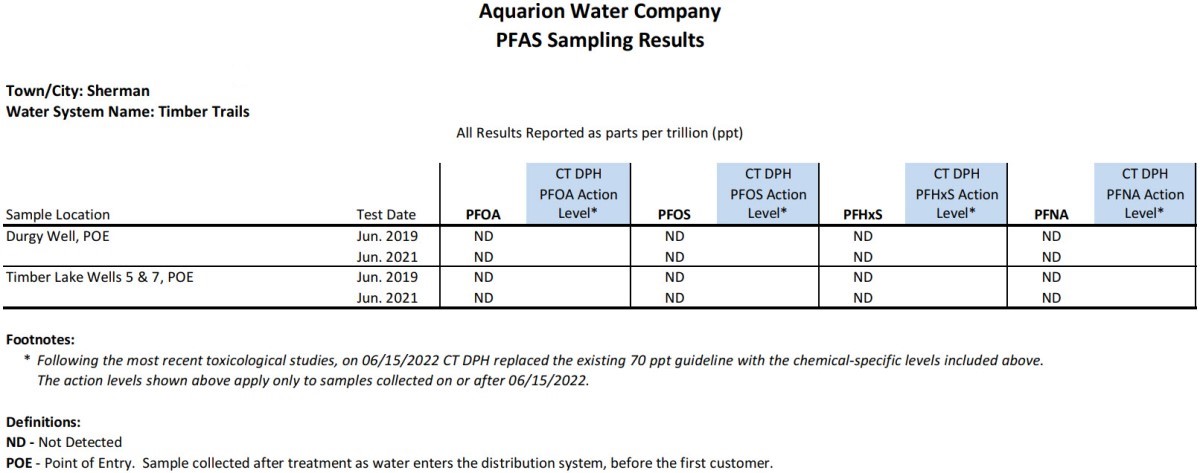
Simsbury / Granby / East Granby System PFAS Sampling Results
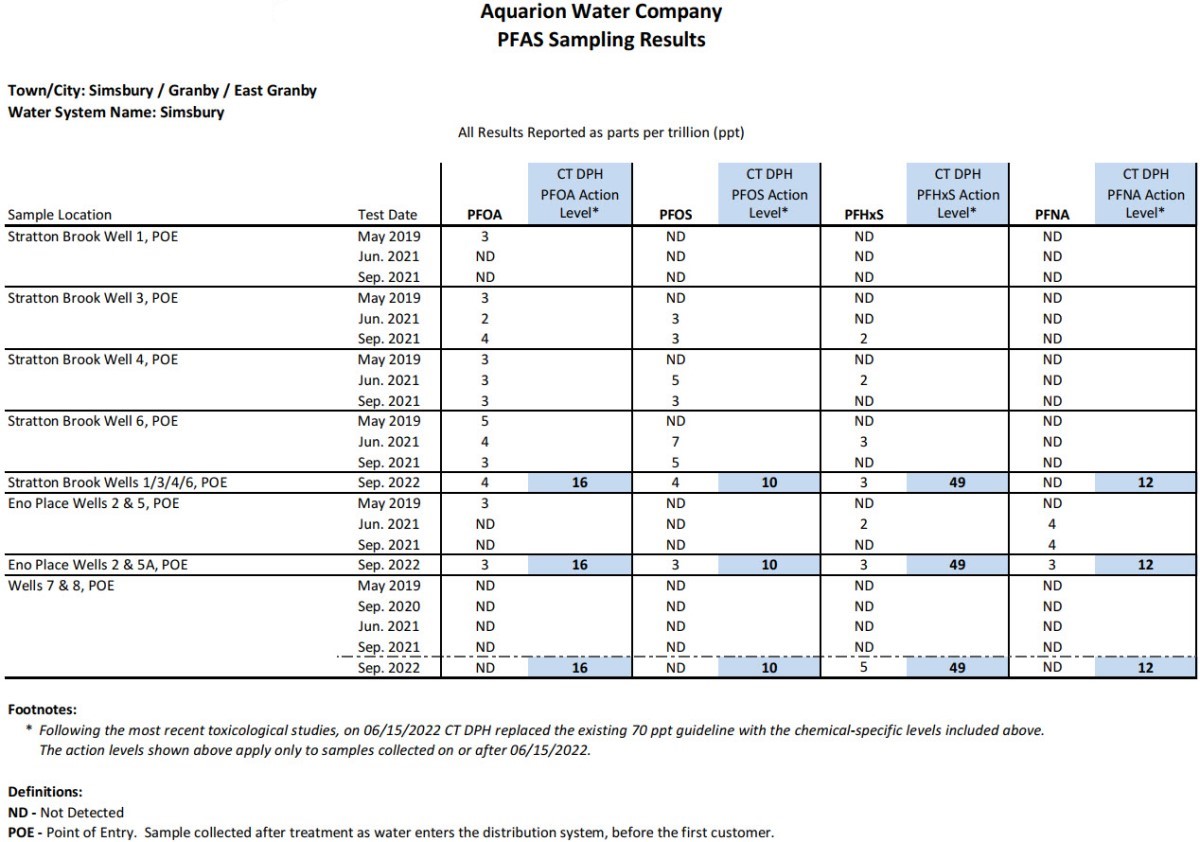
Southbury System PFAS Sampling Results
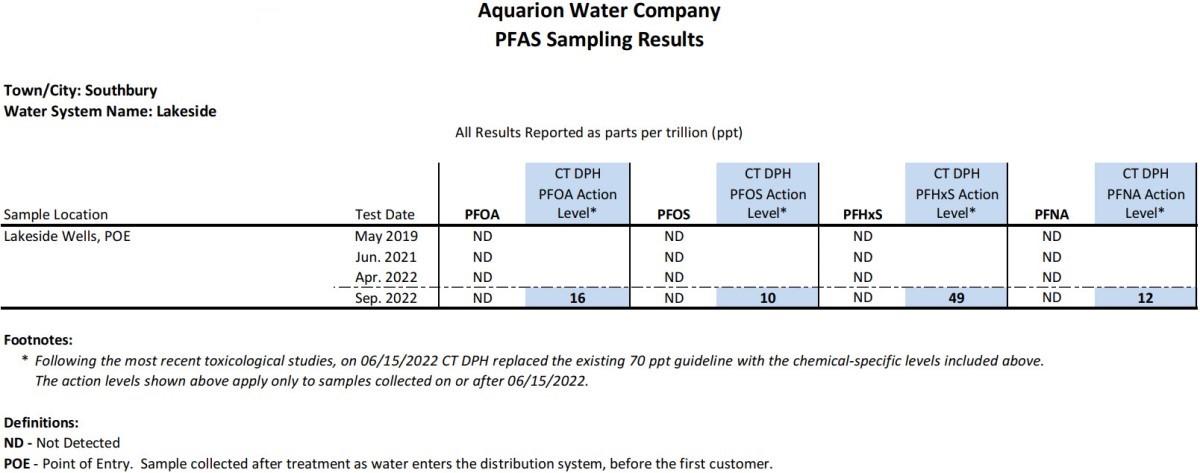
Stamford System PFAS Sampling Results
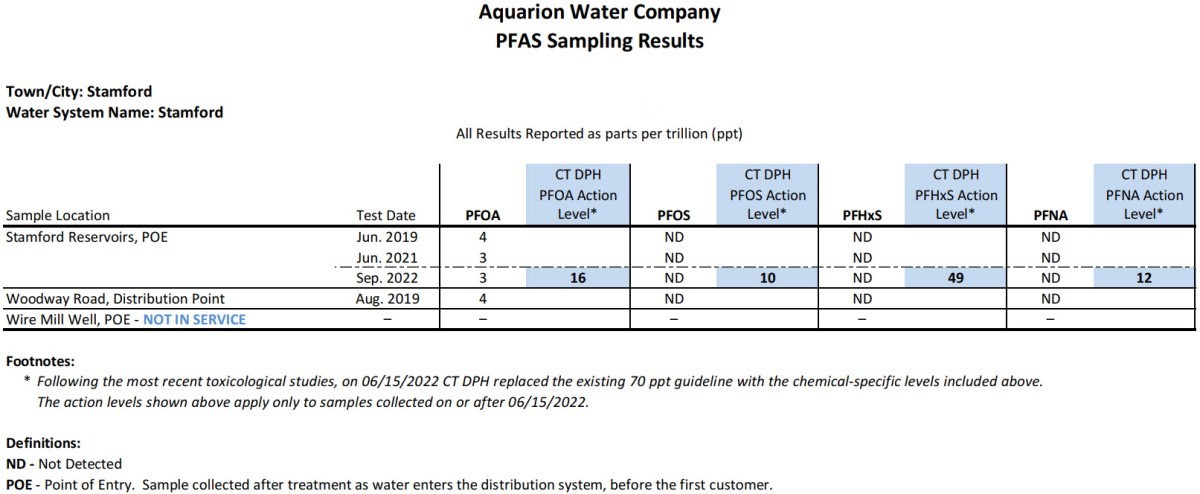
Stonington System PFAS Sampling Results
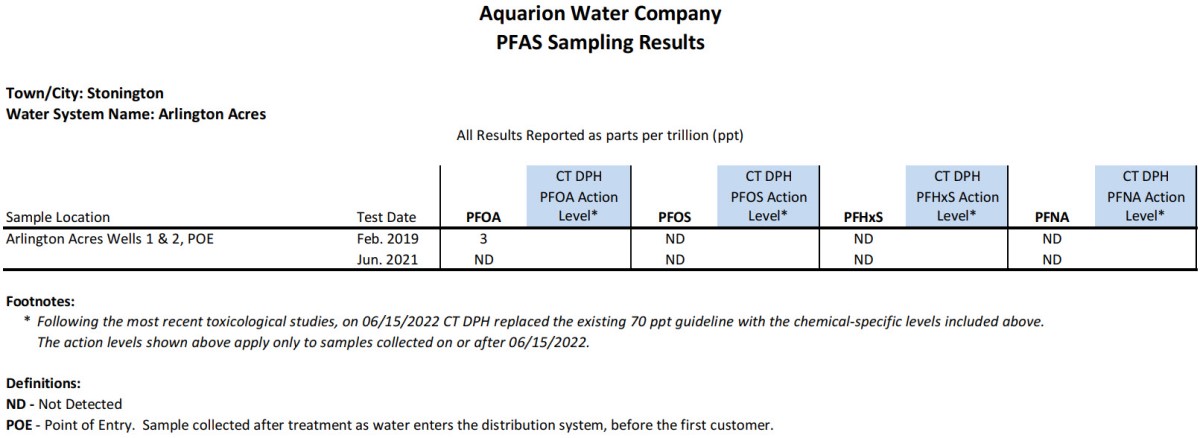
Suffield System PFAS Sampling Results
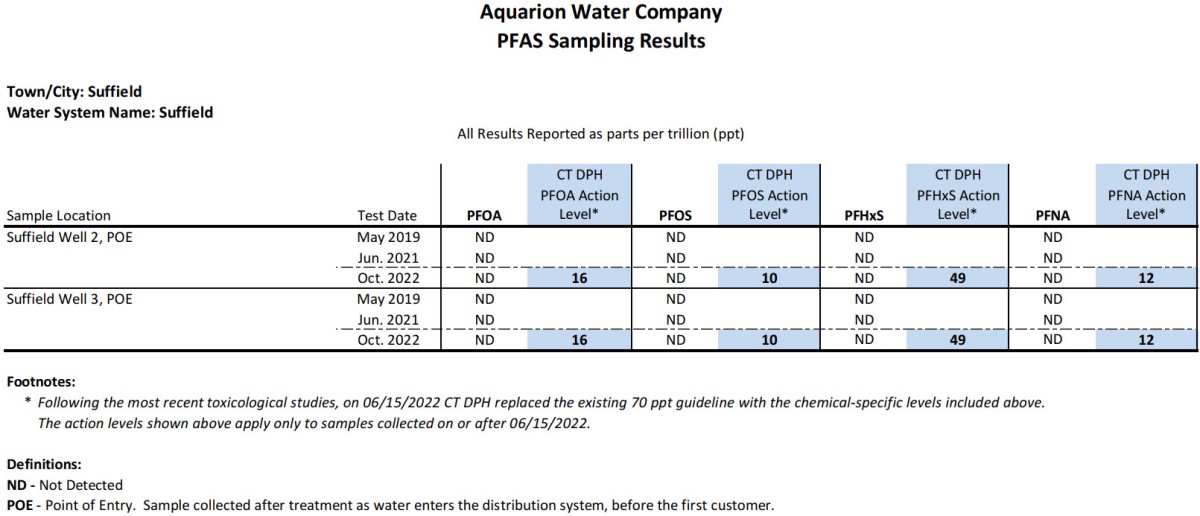
Washington Systems PFAS Sampling Results
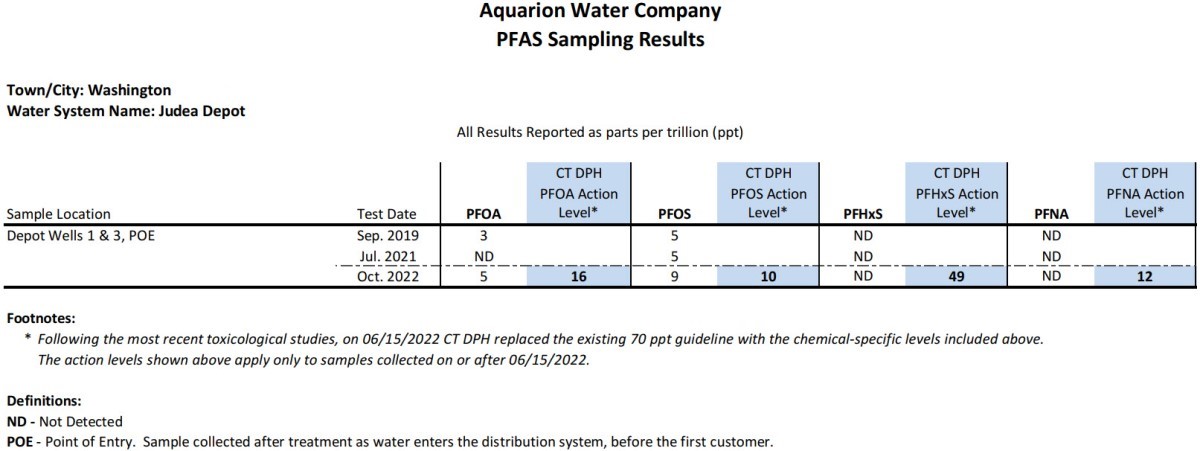
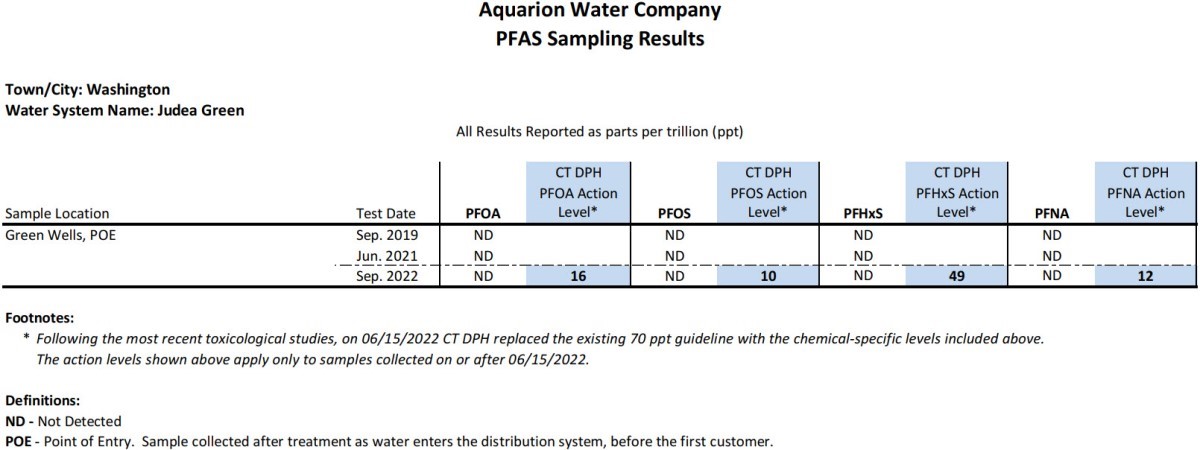
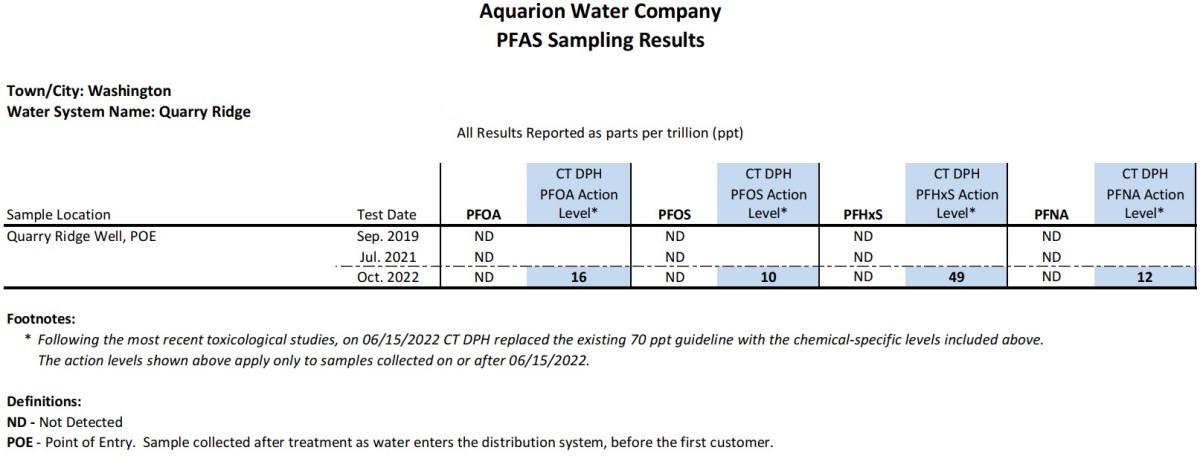
Wolcott Systems PFAS Sampling Results
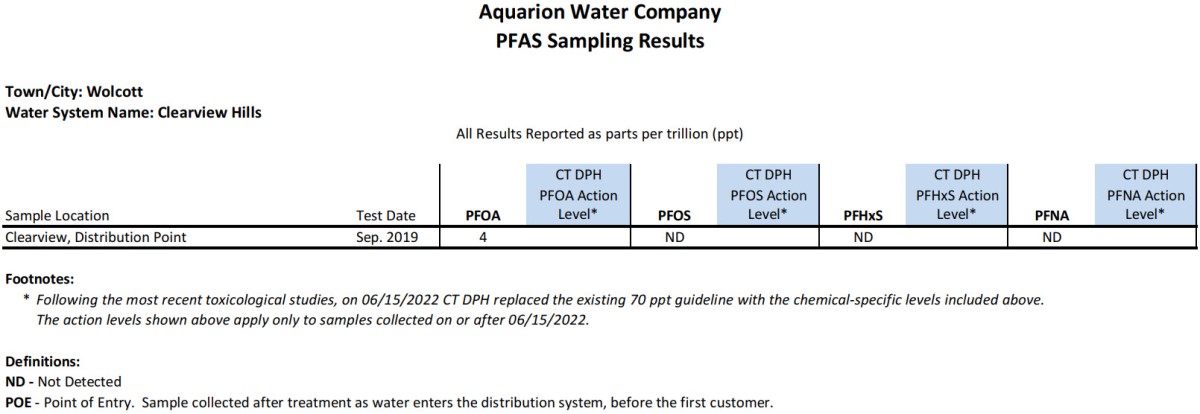
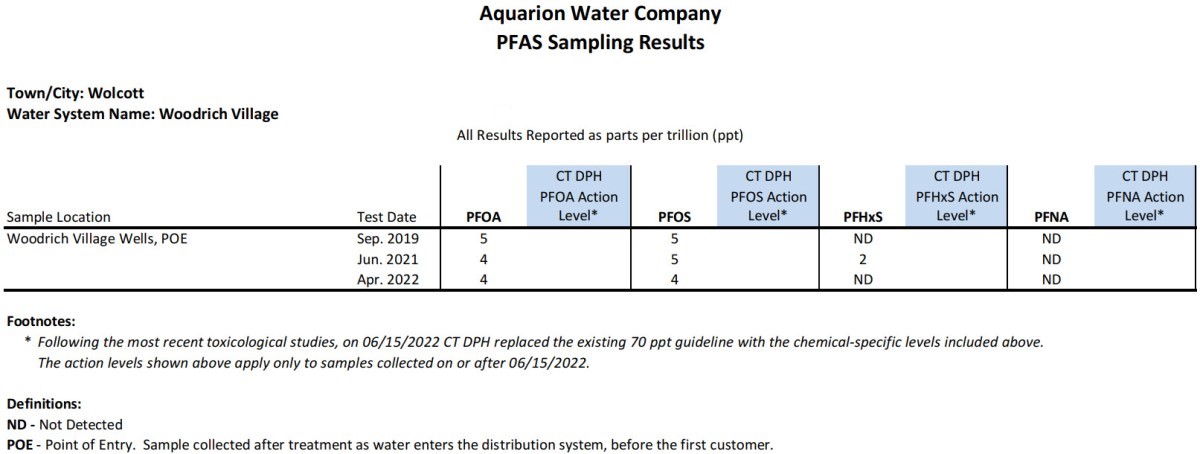
Woodbury System PFAS Sampling Results
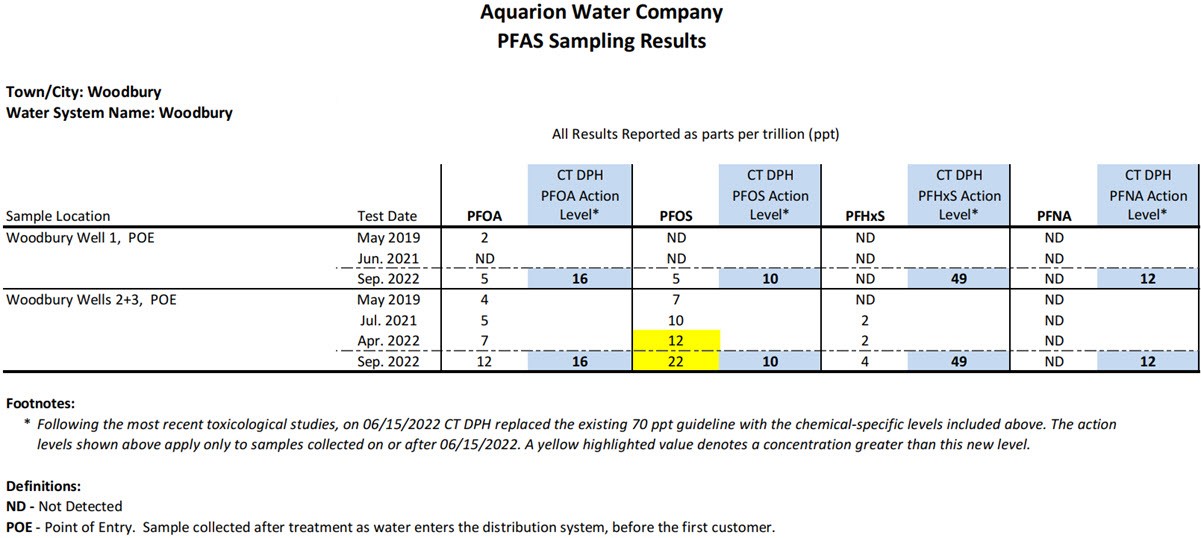
Additional Resources
Learn more about PFAS and the Connecticut Department of Public Health's Drinking Water Section Strategy at ct.gov.
Learn More